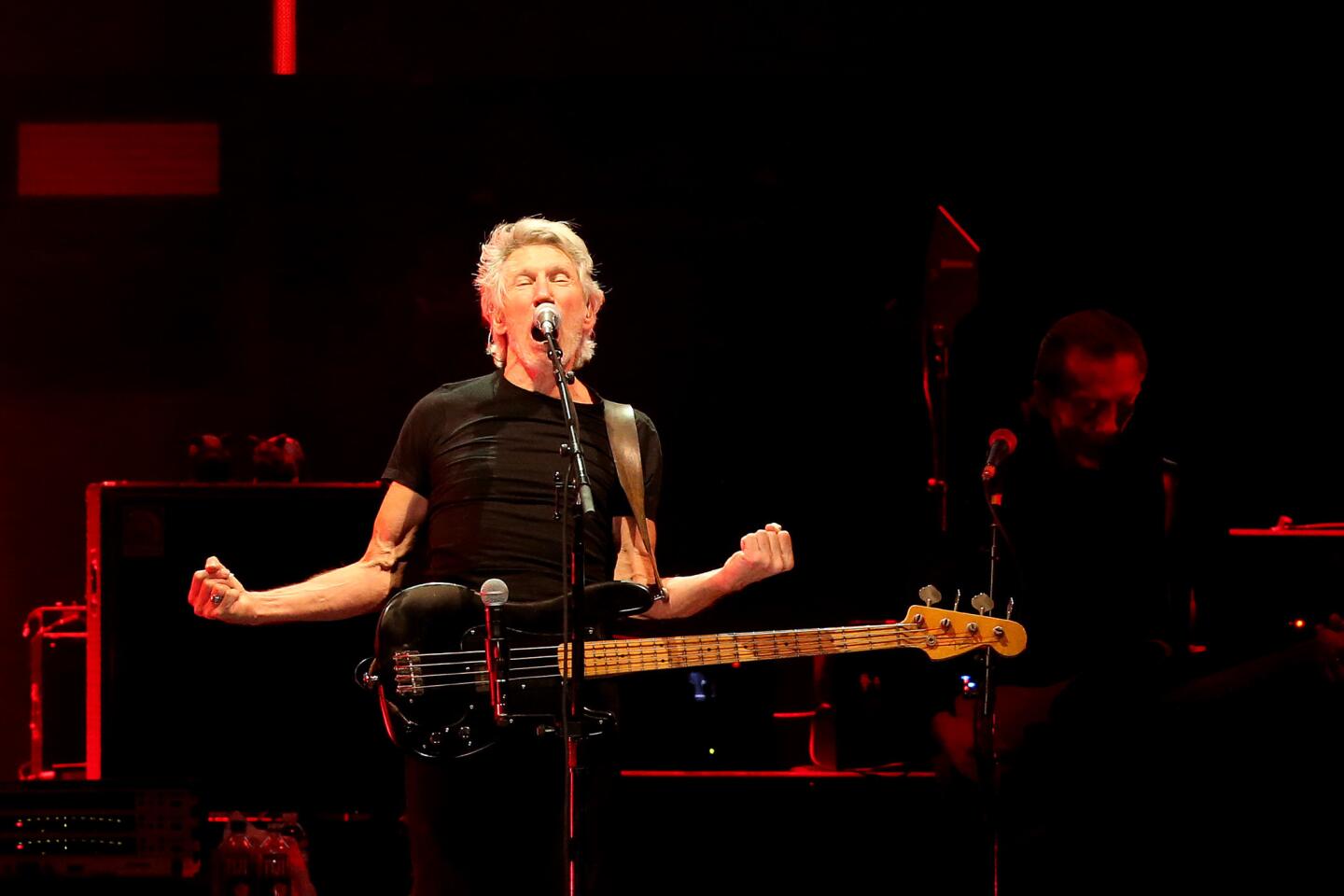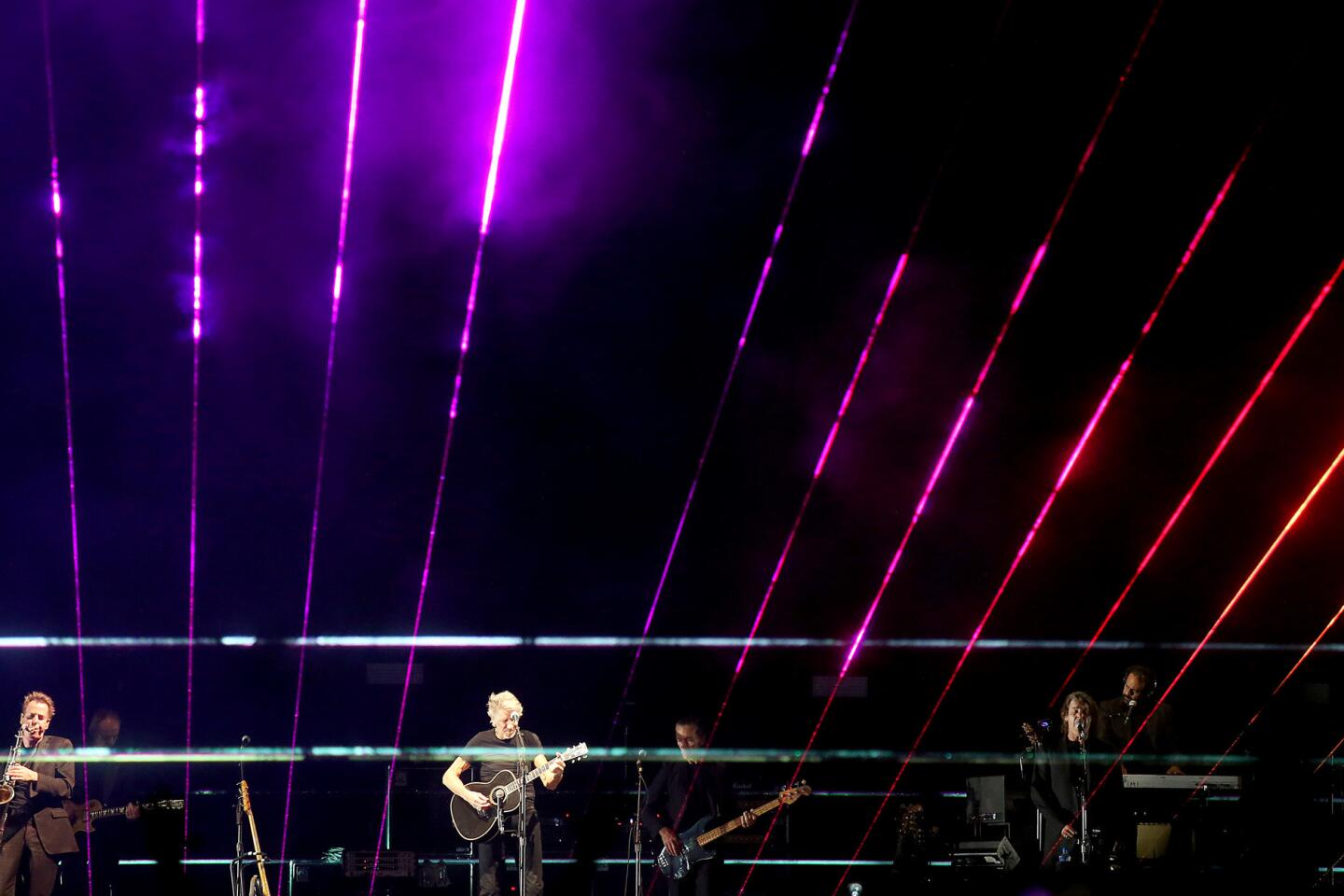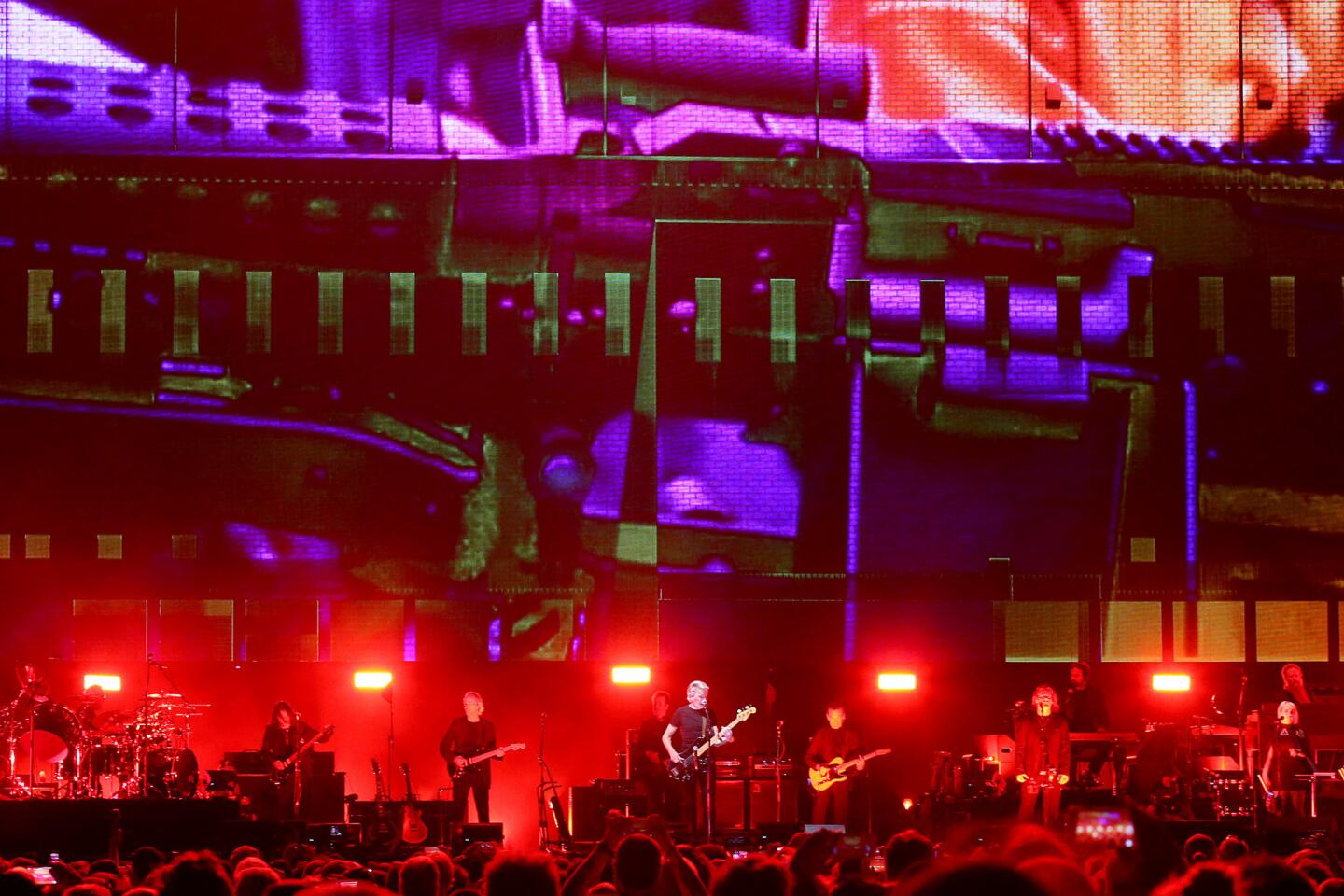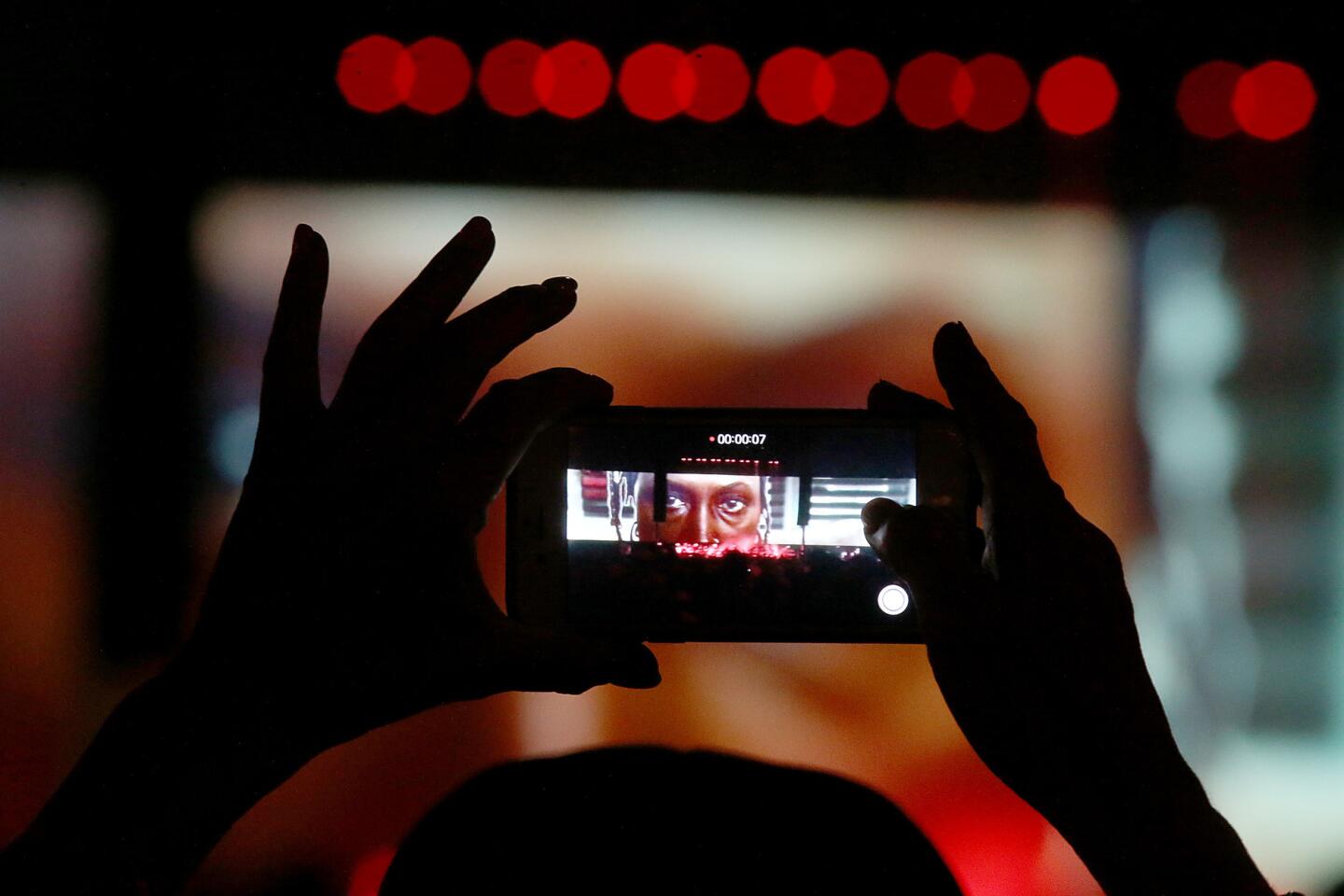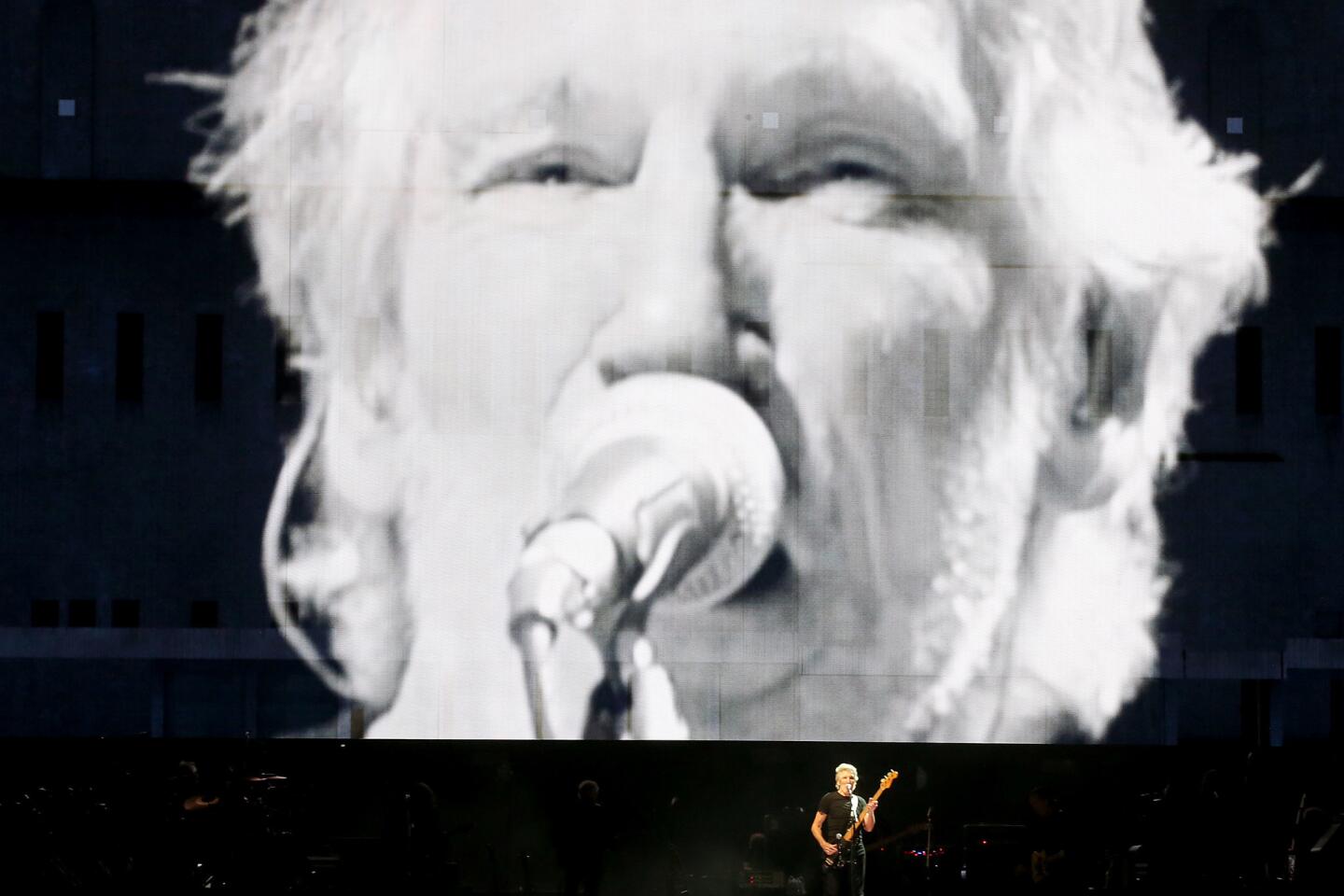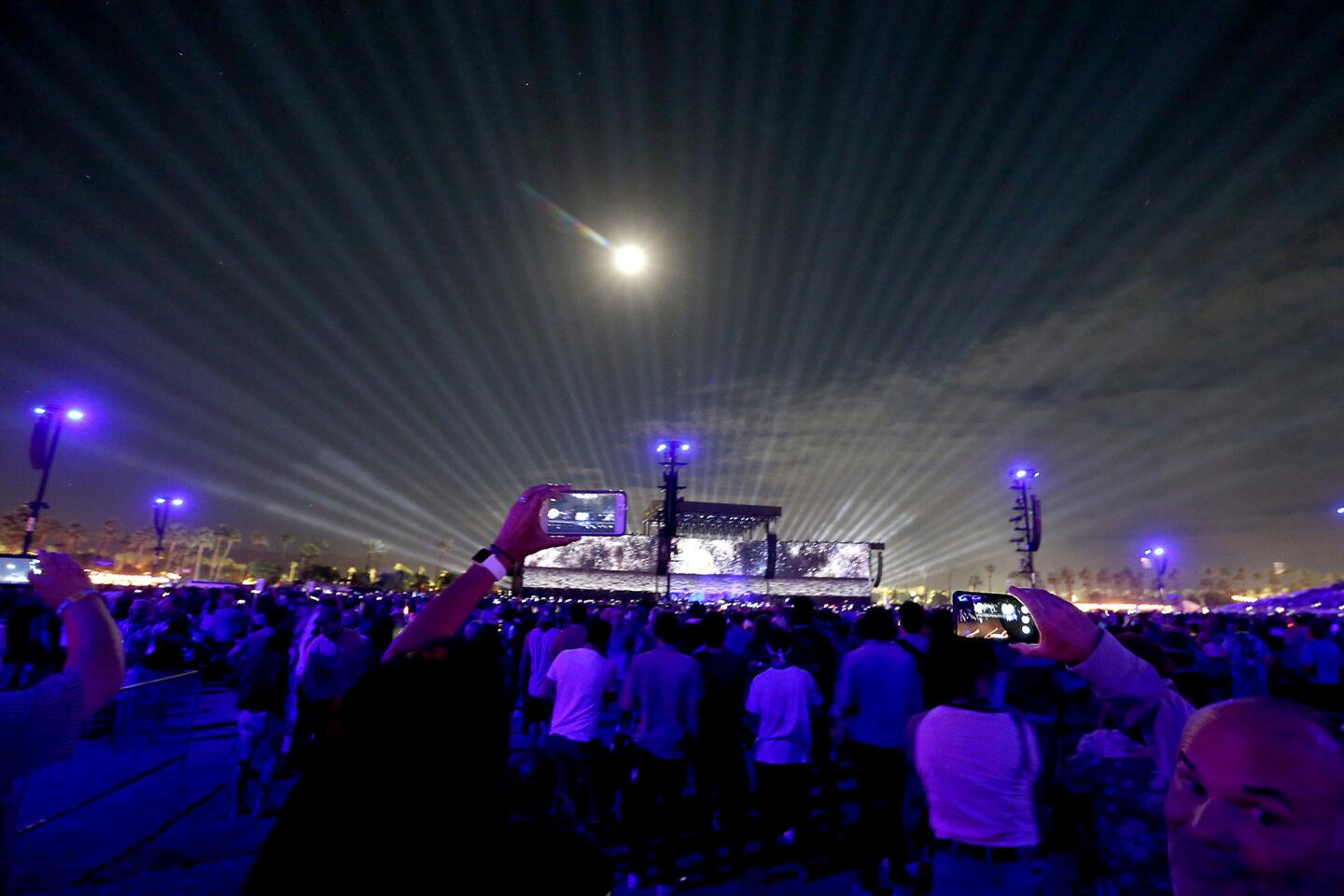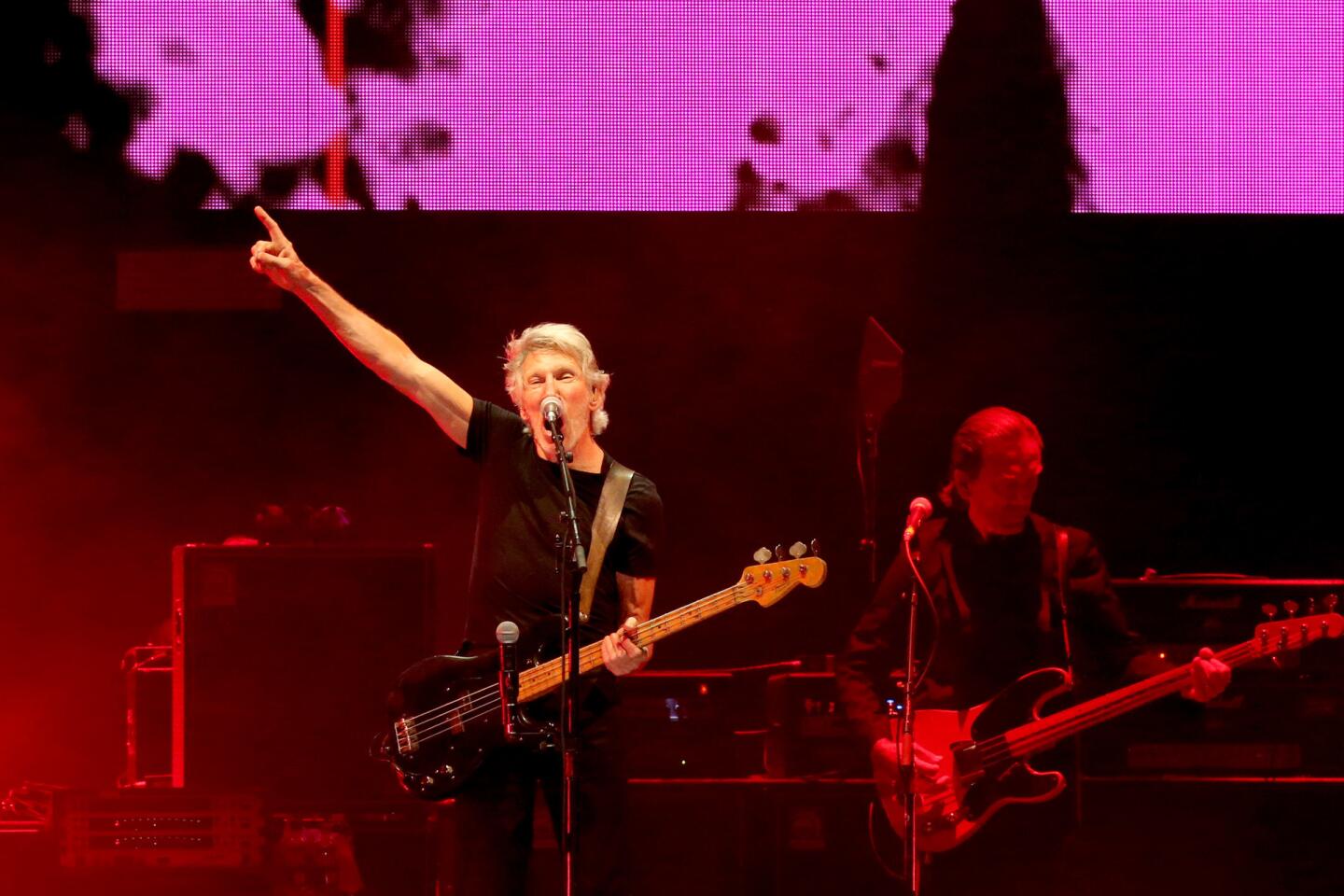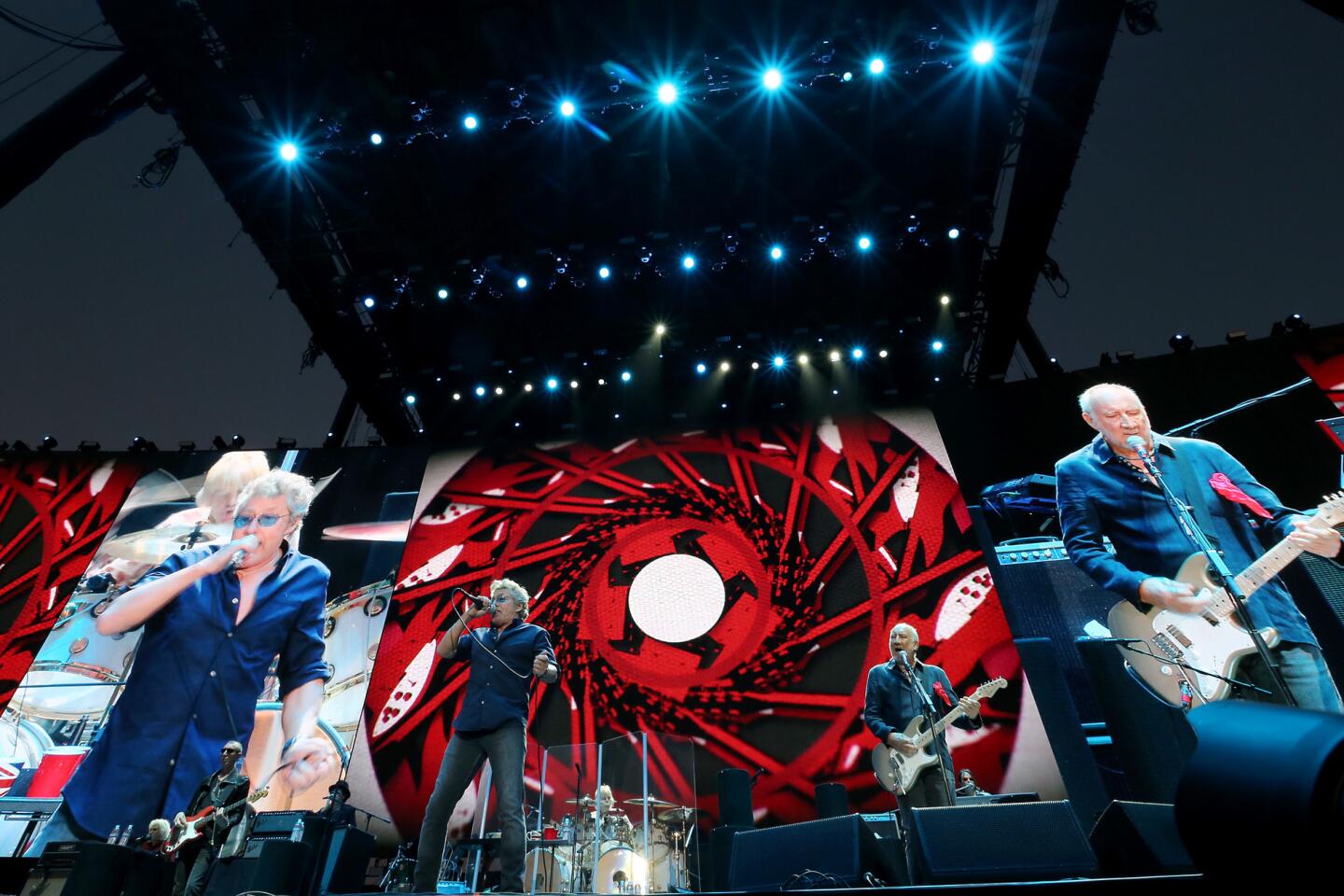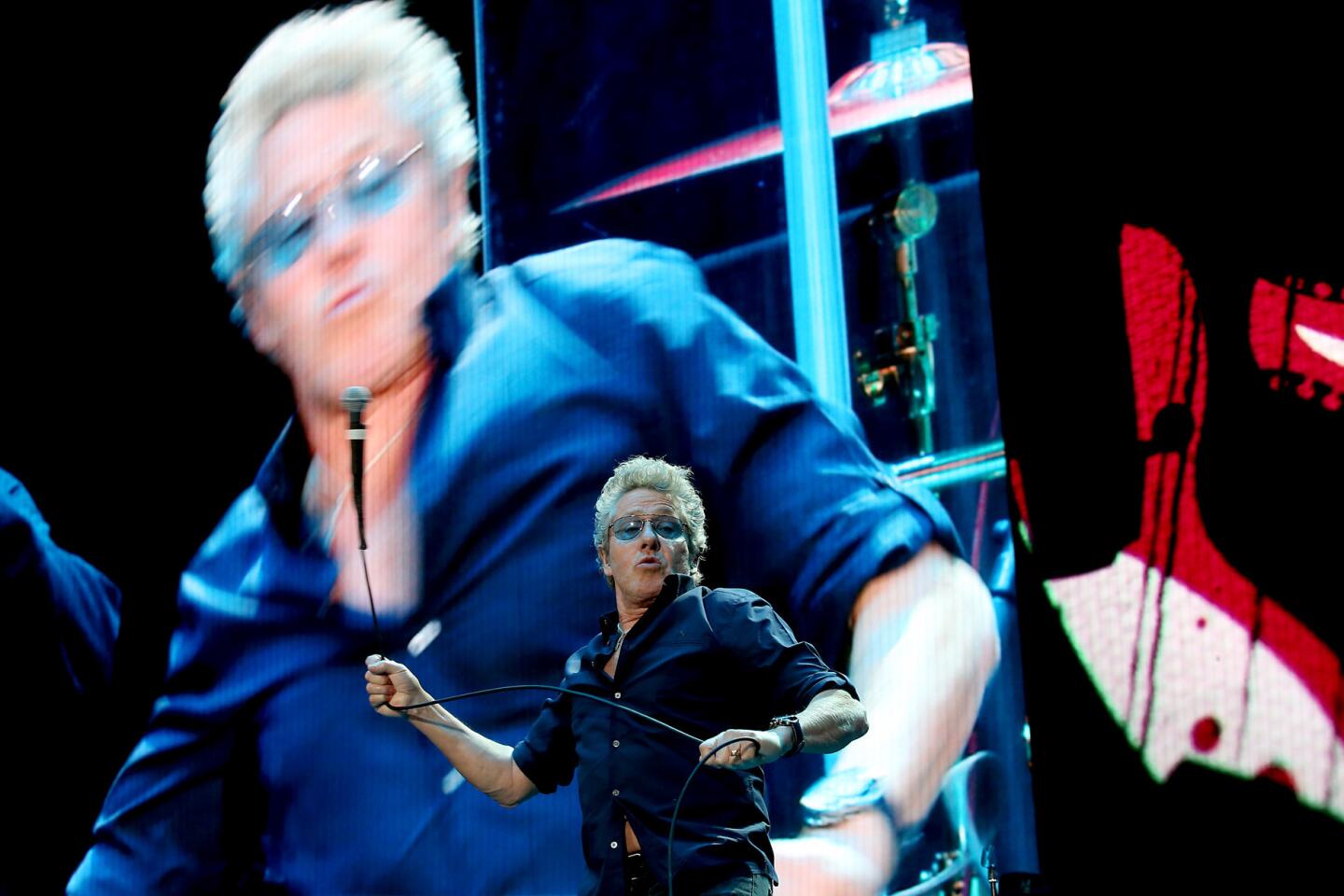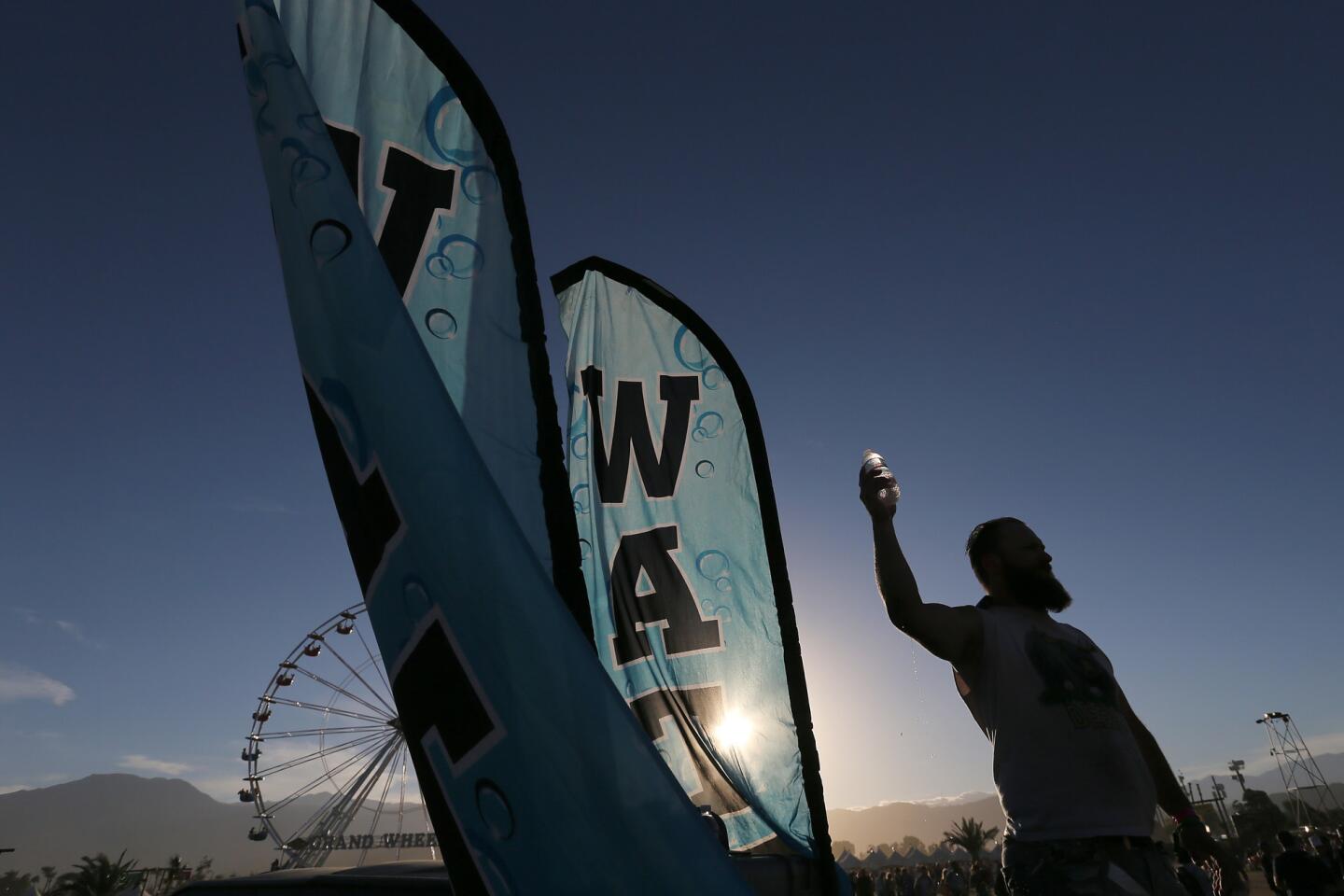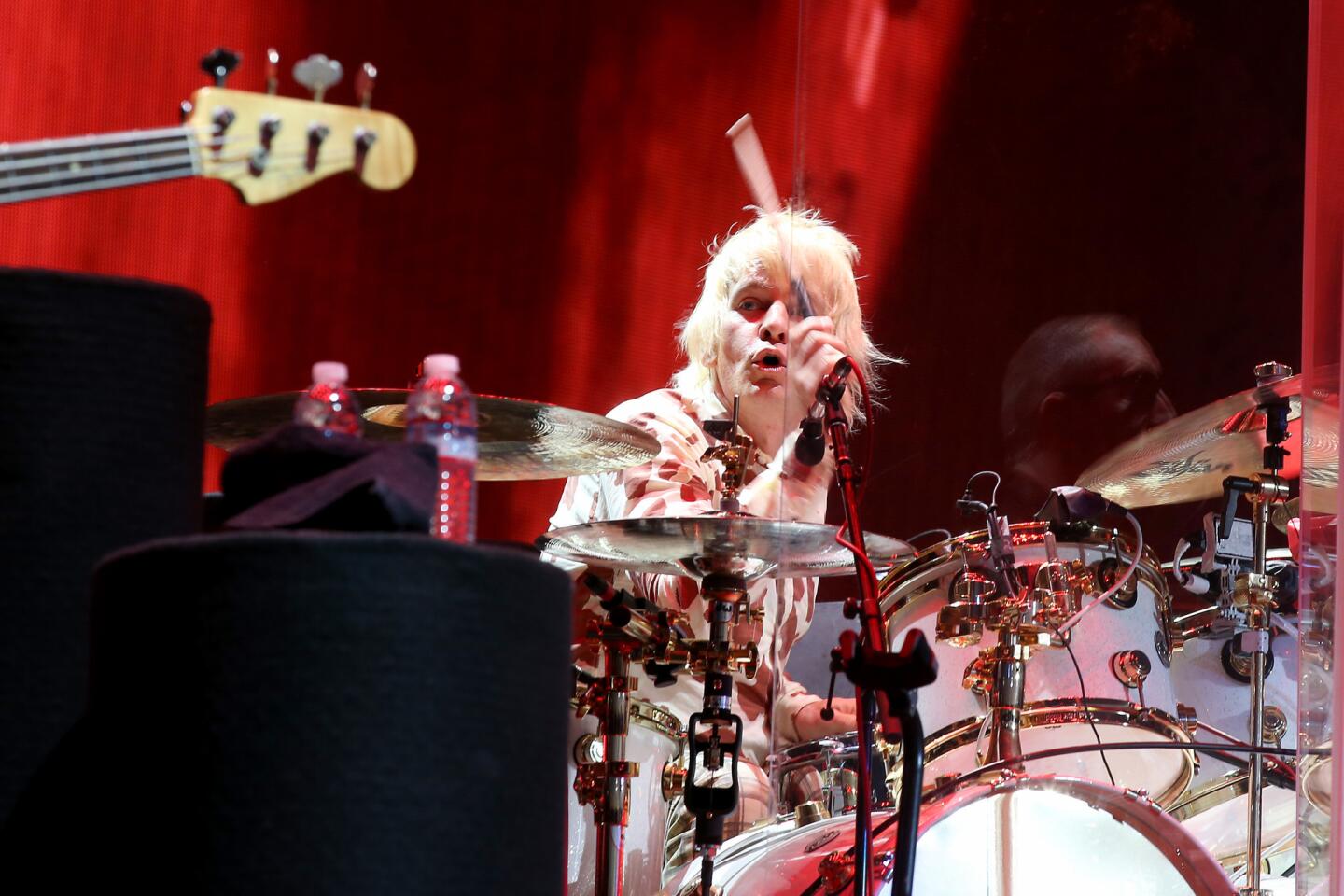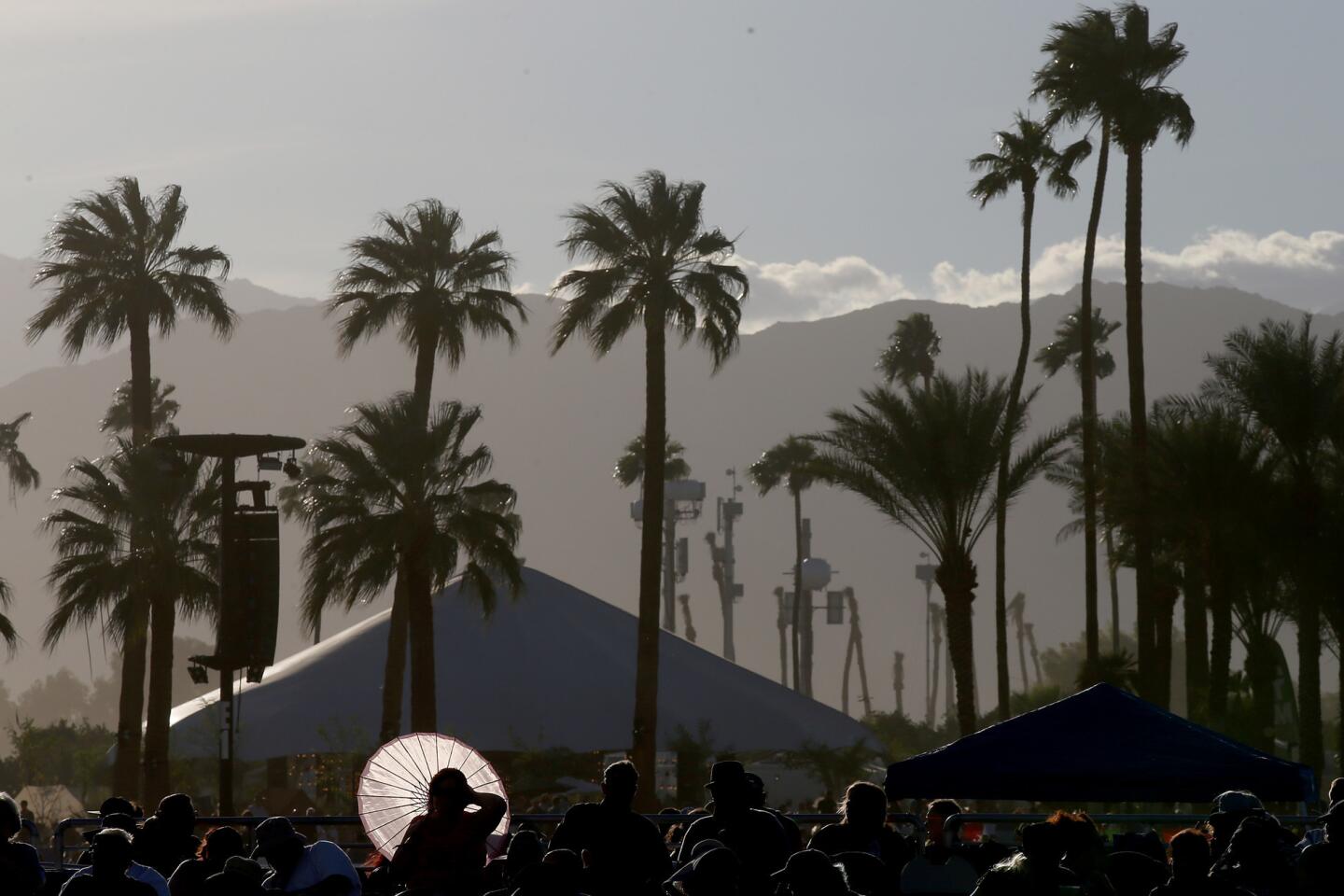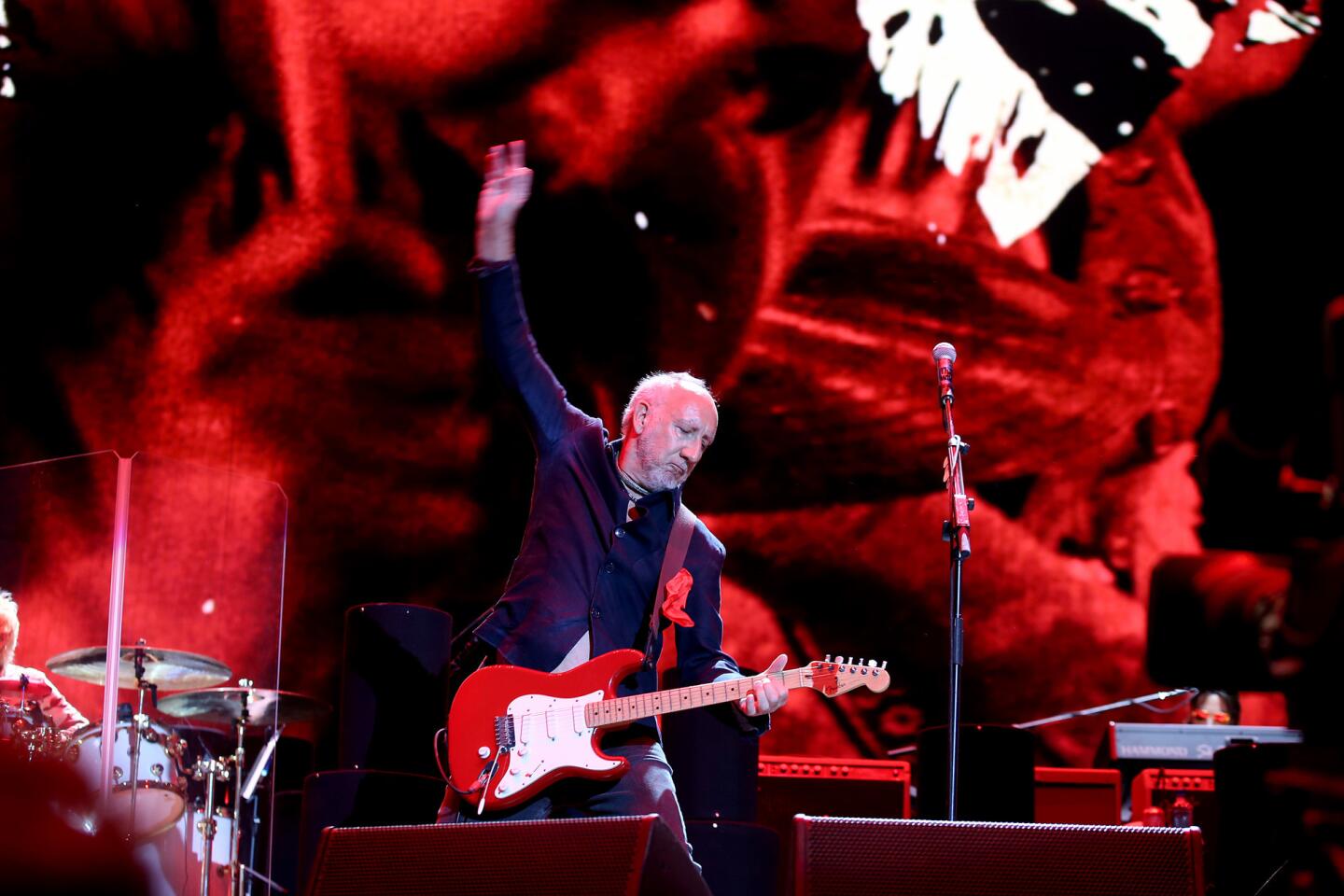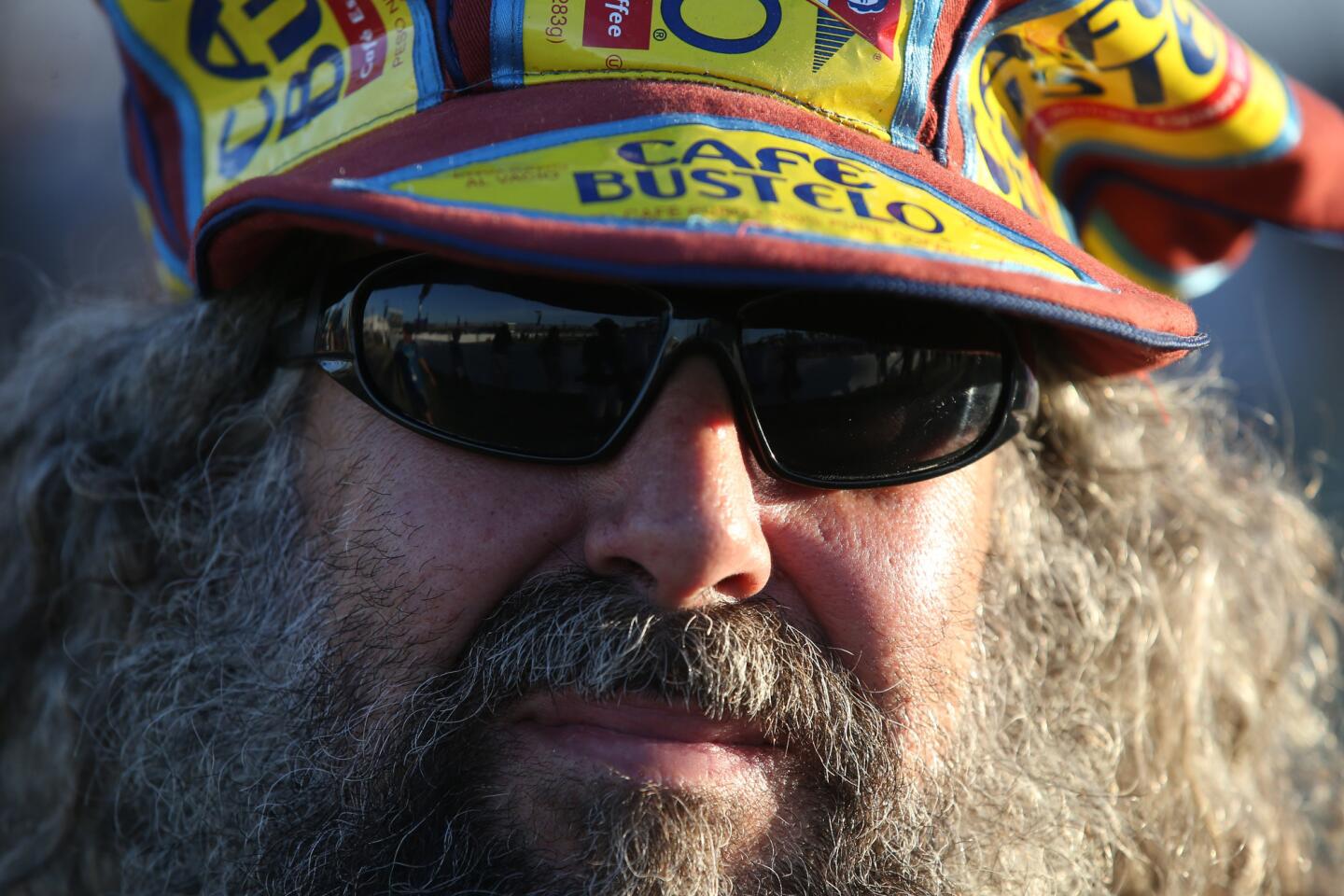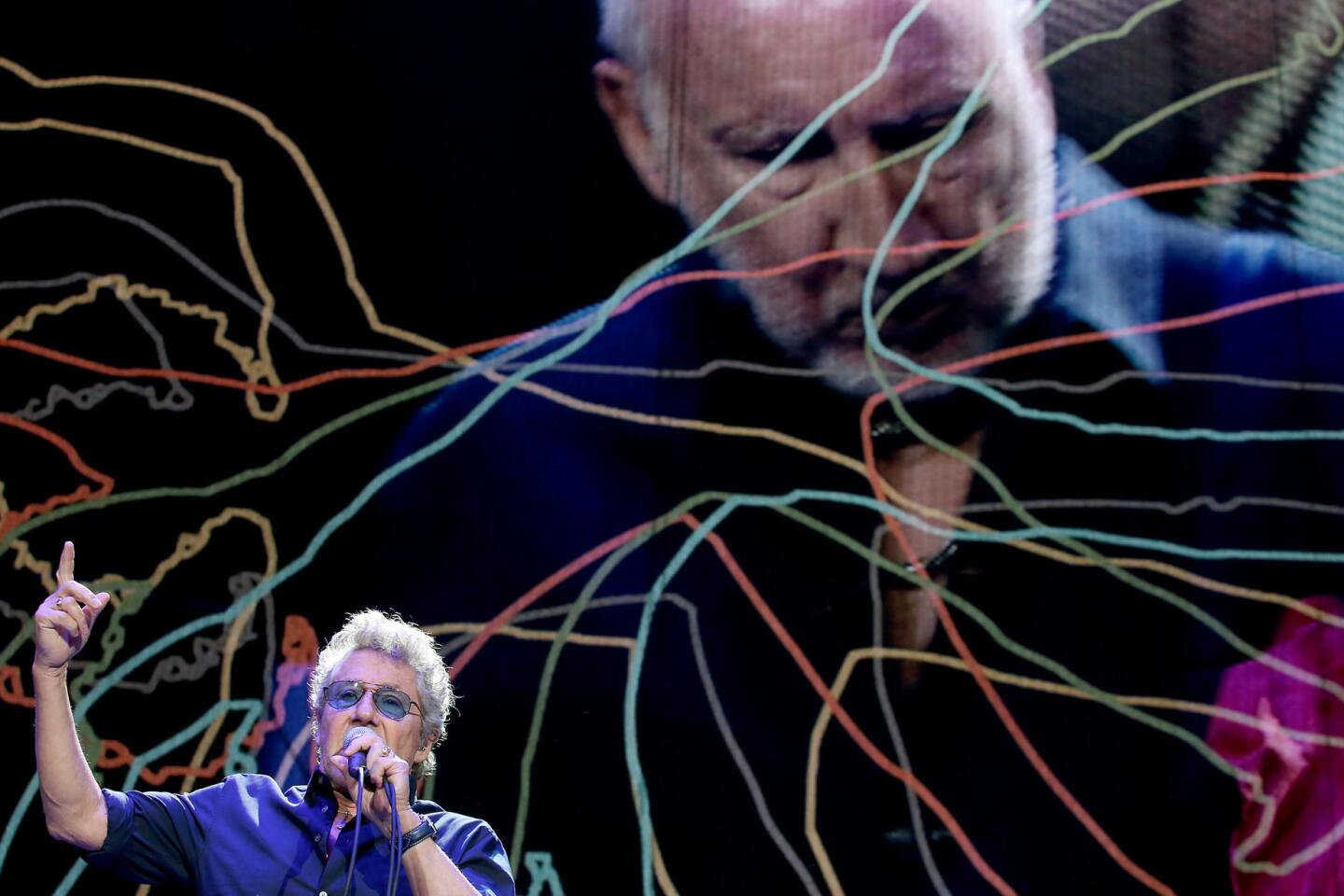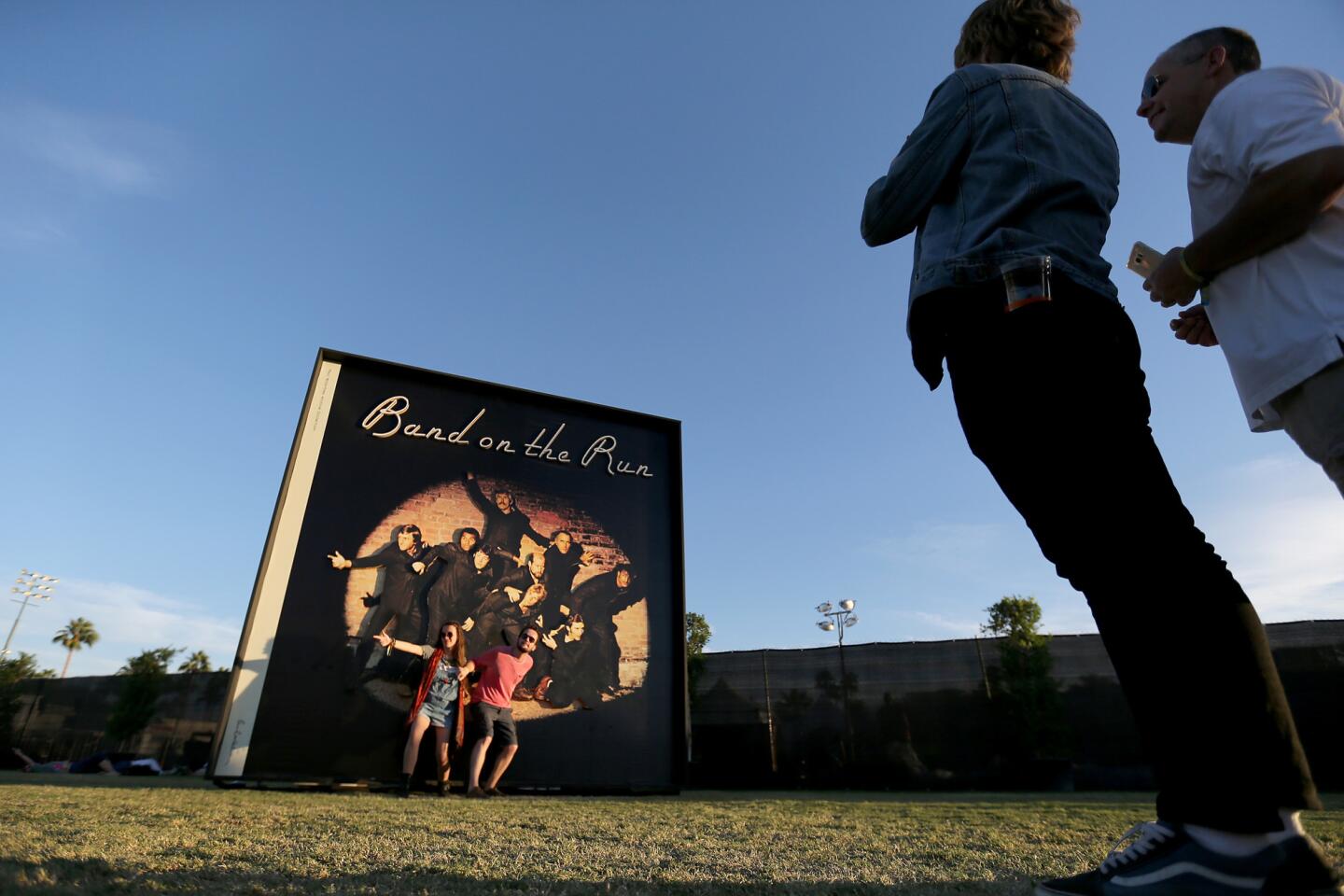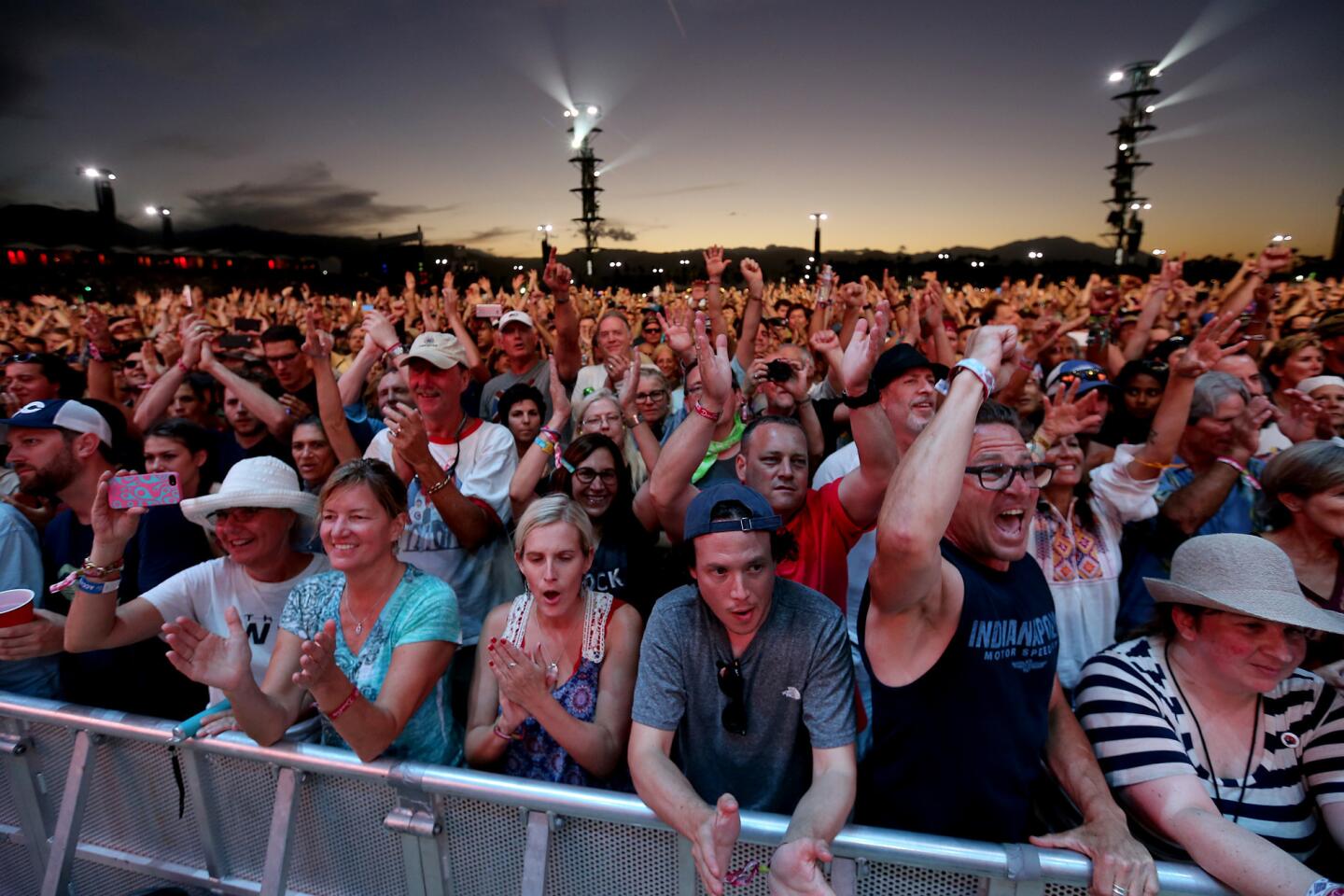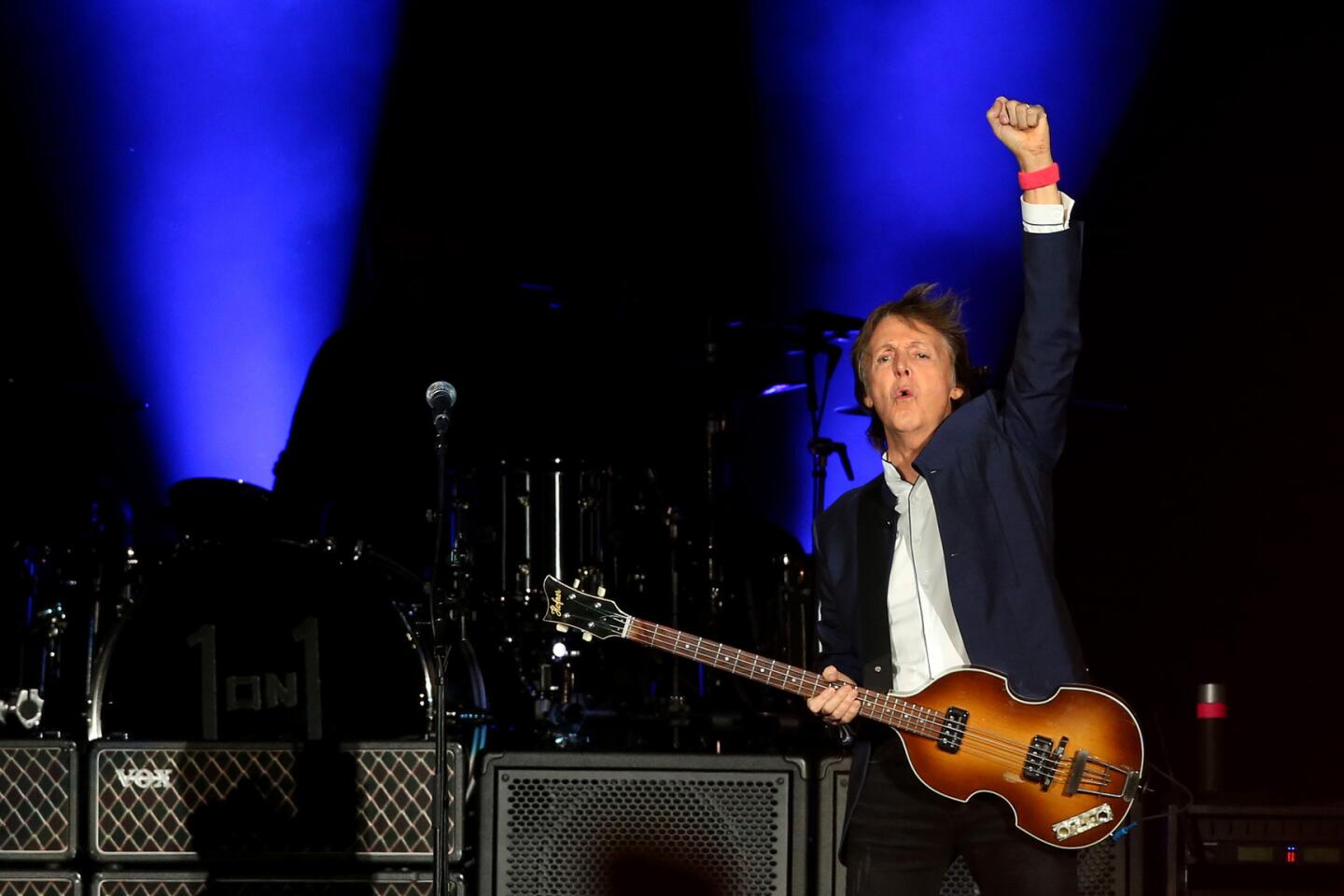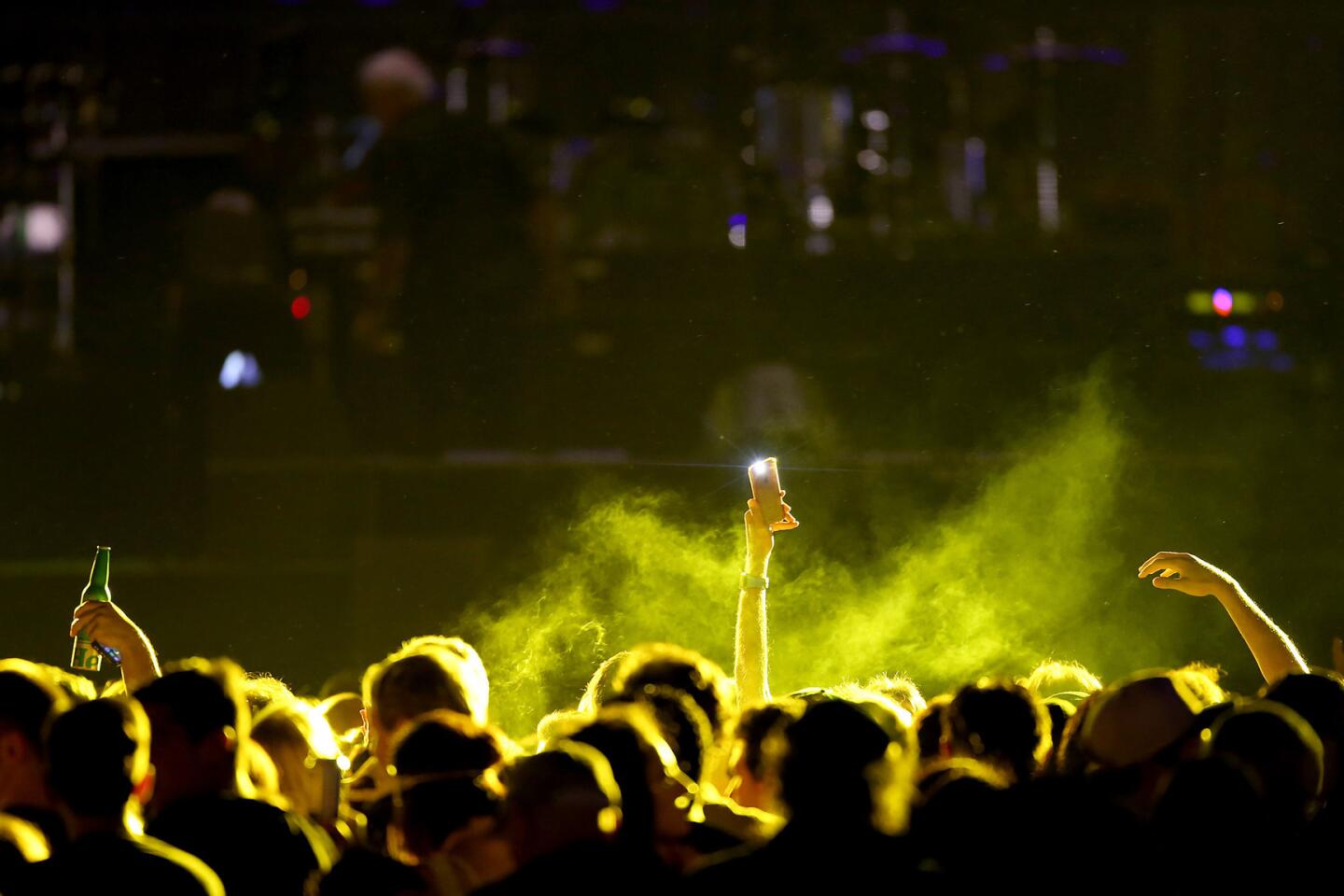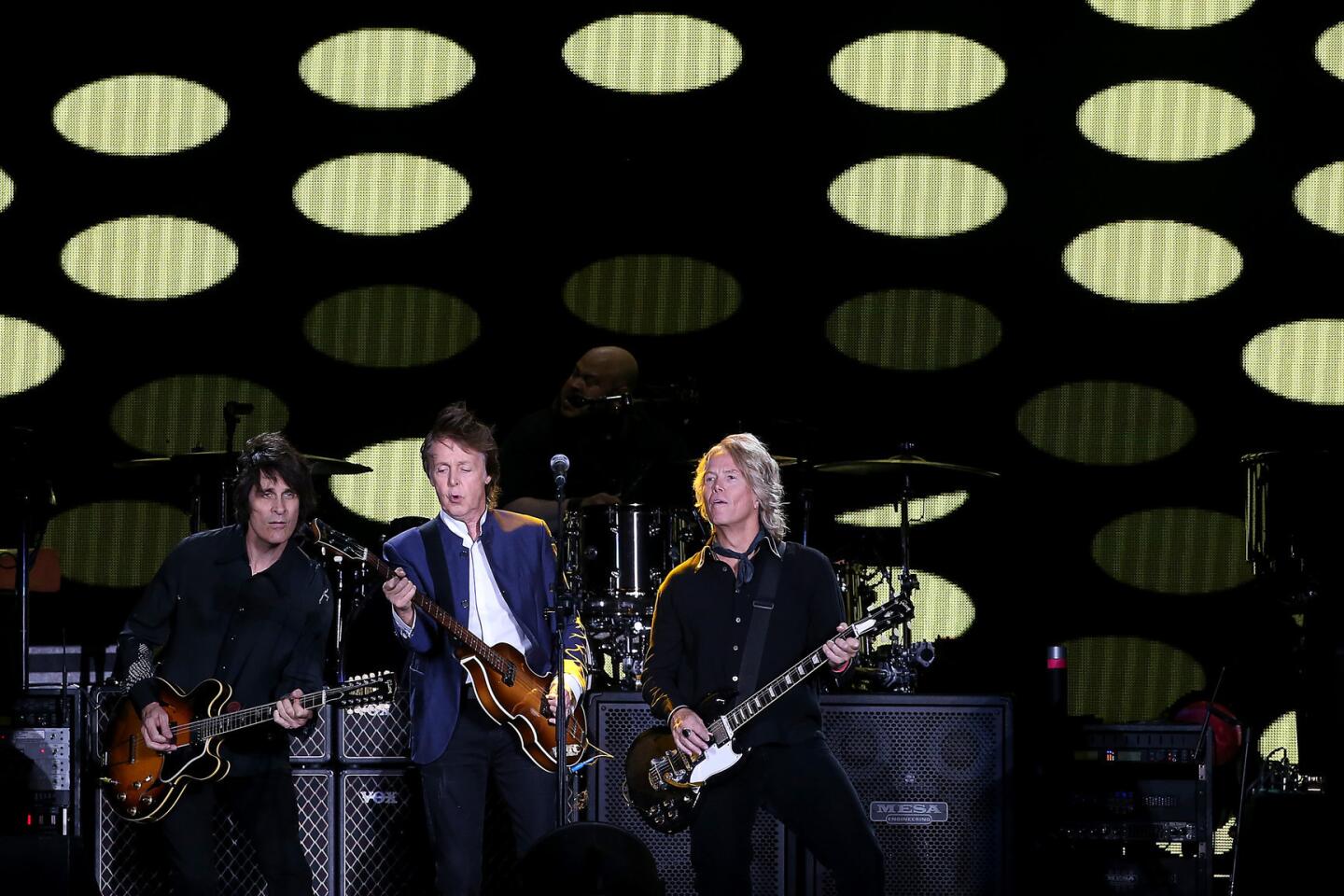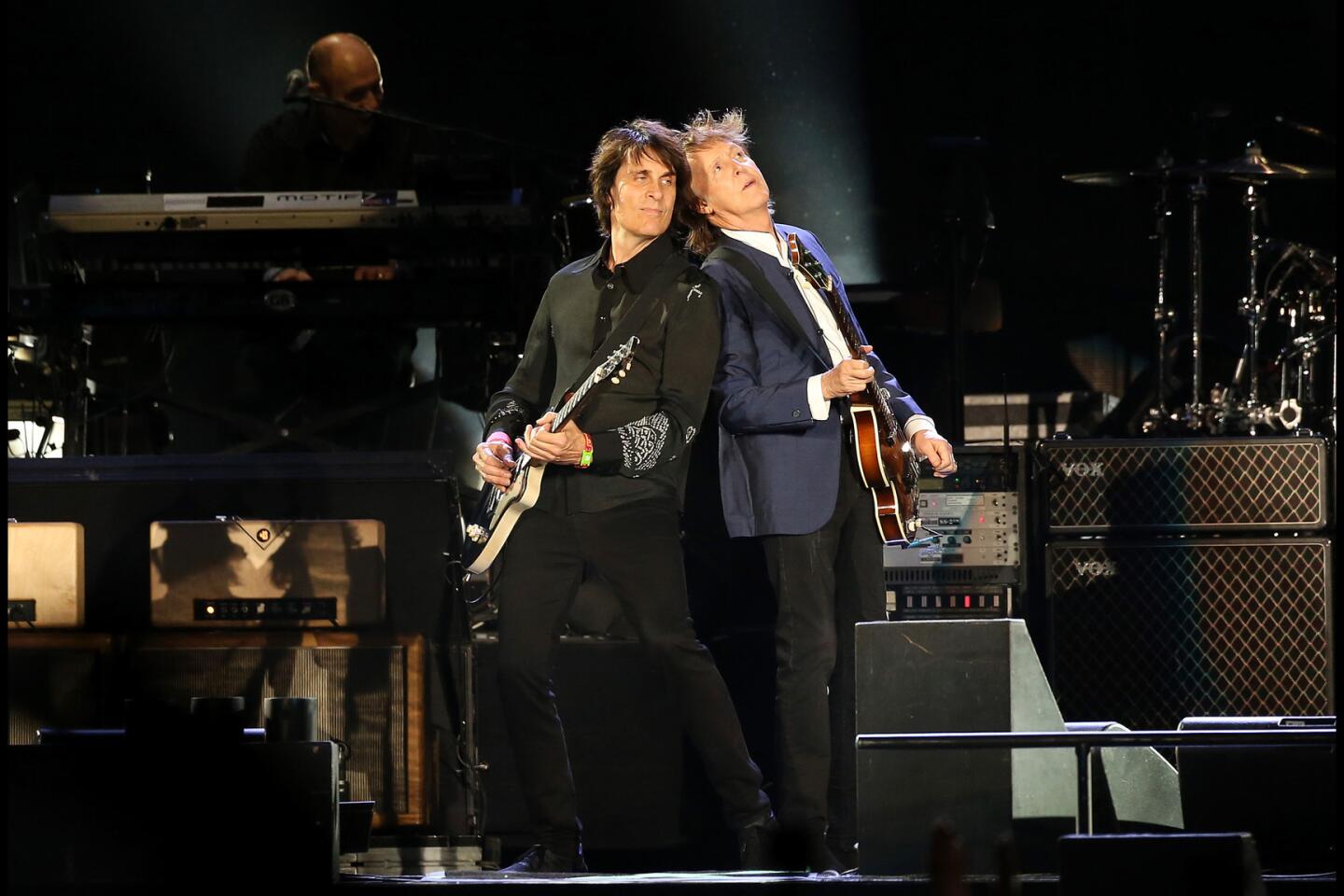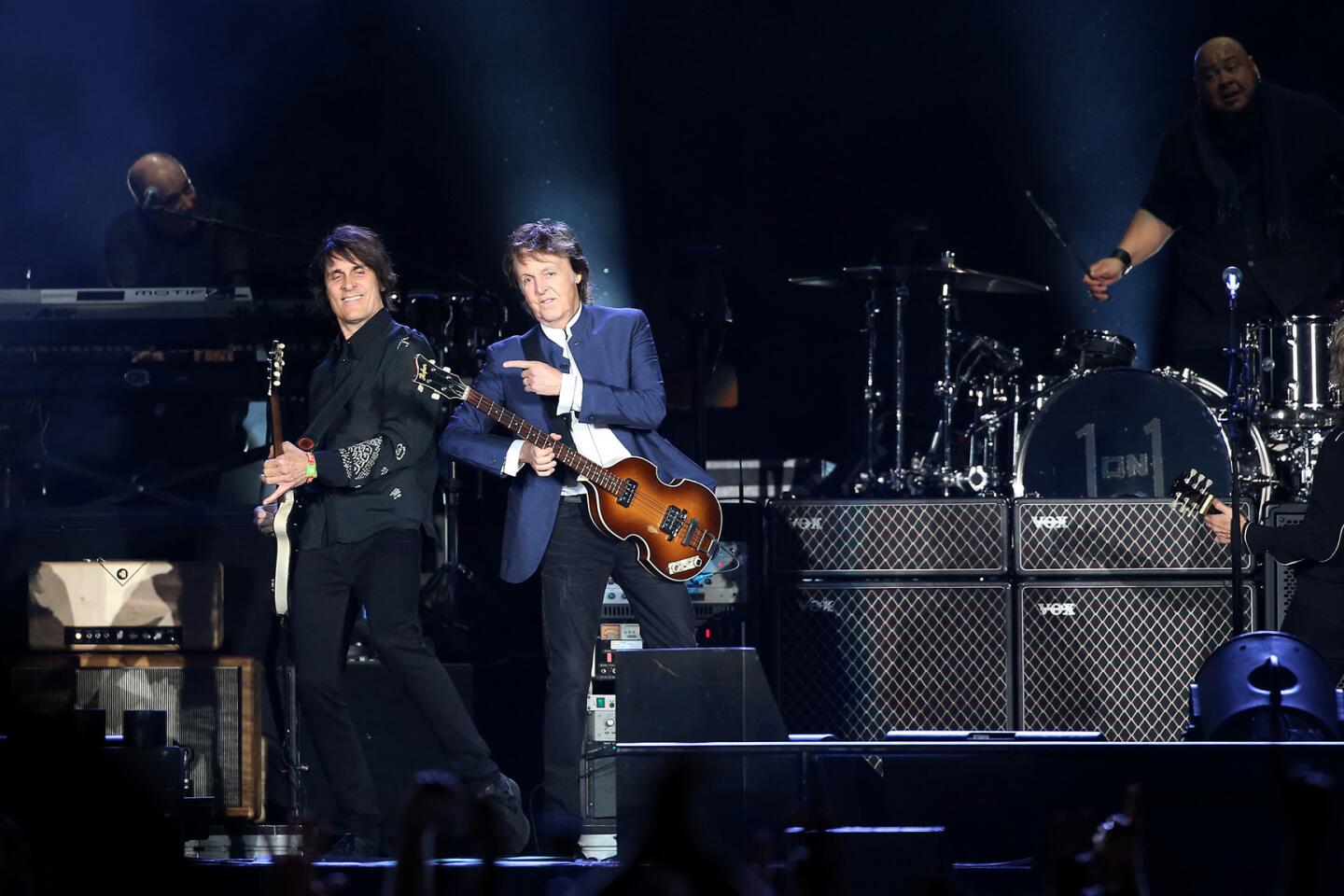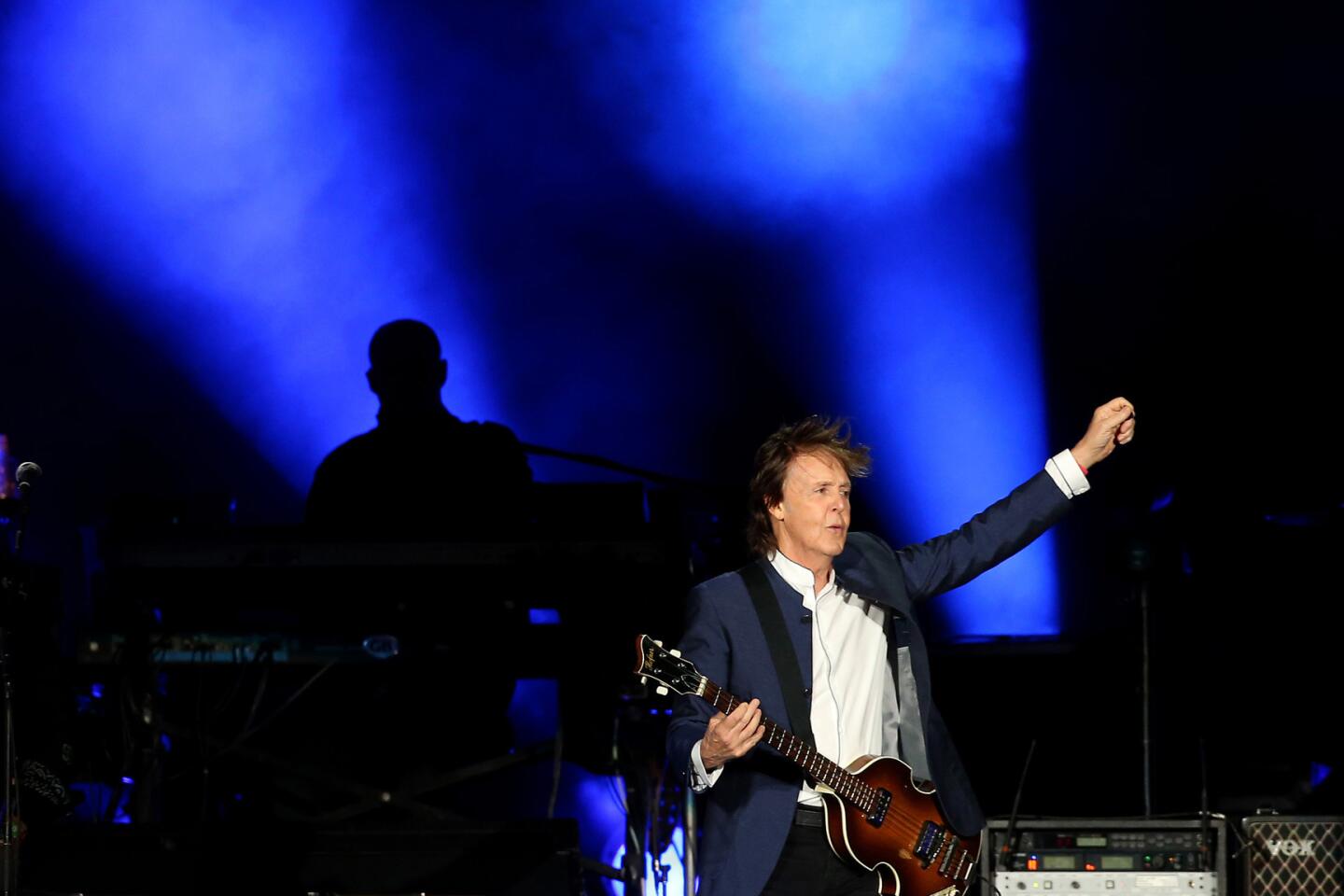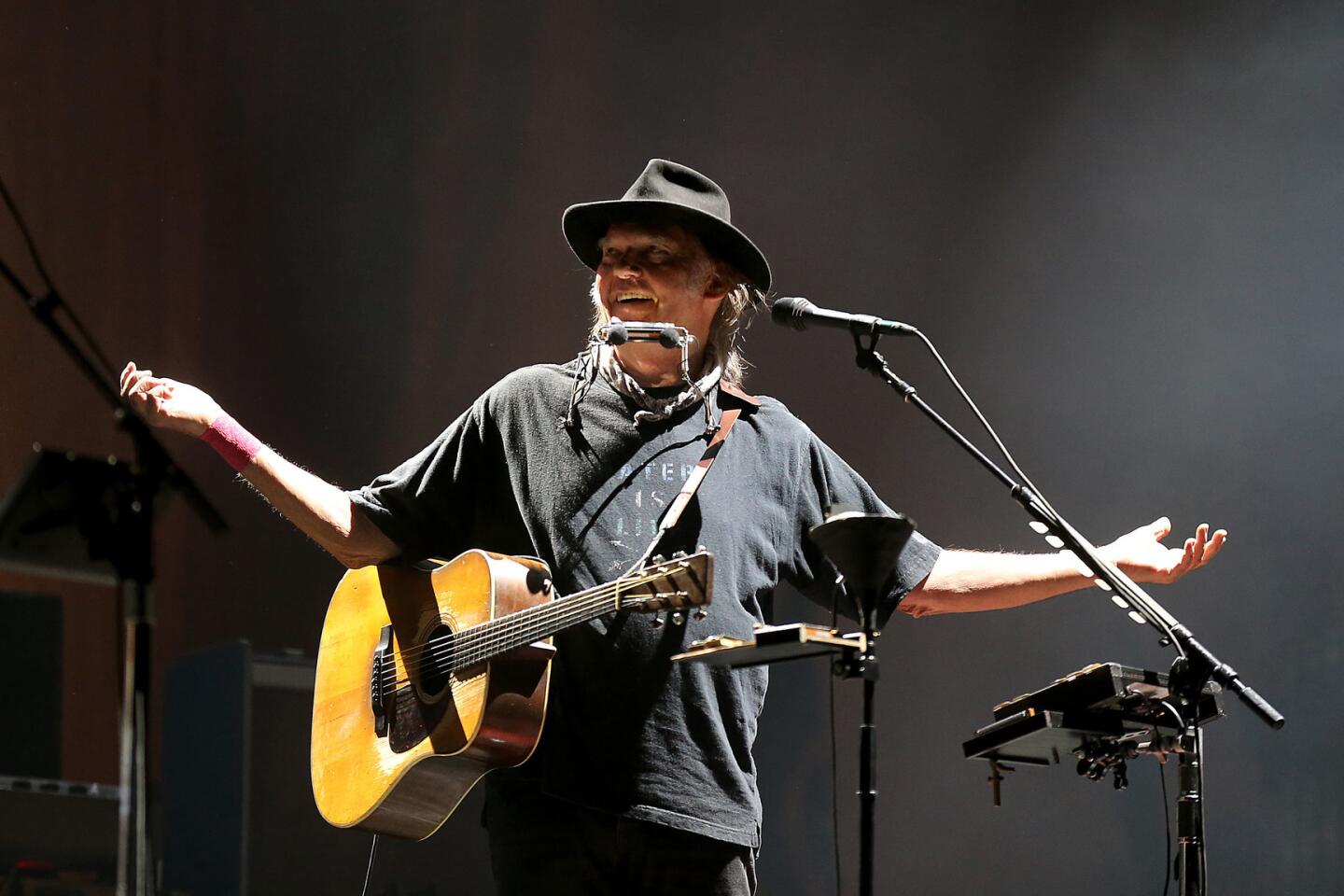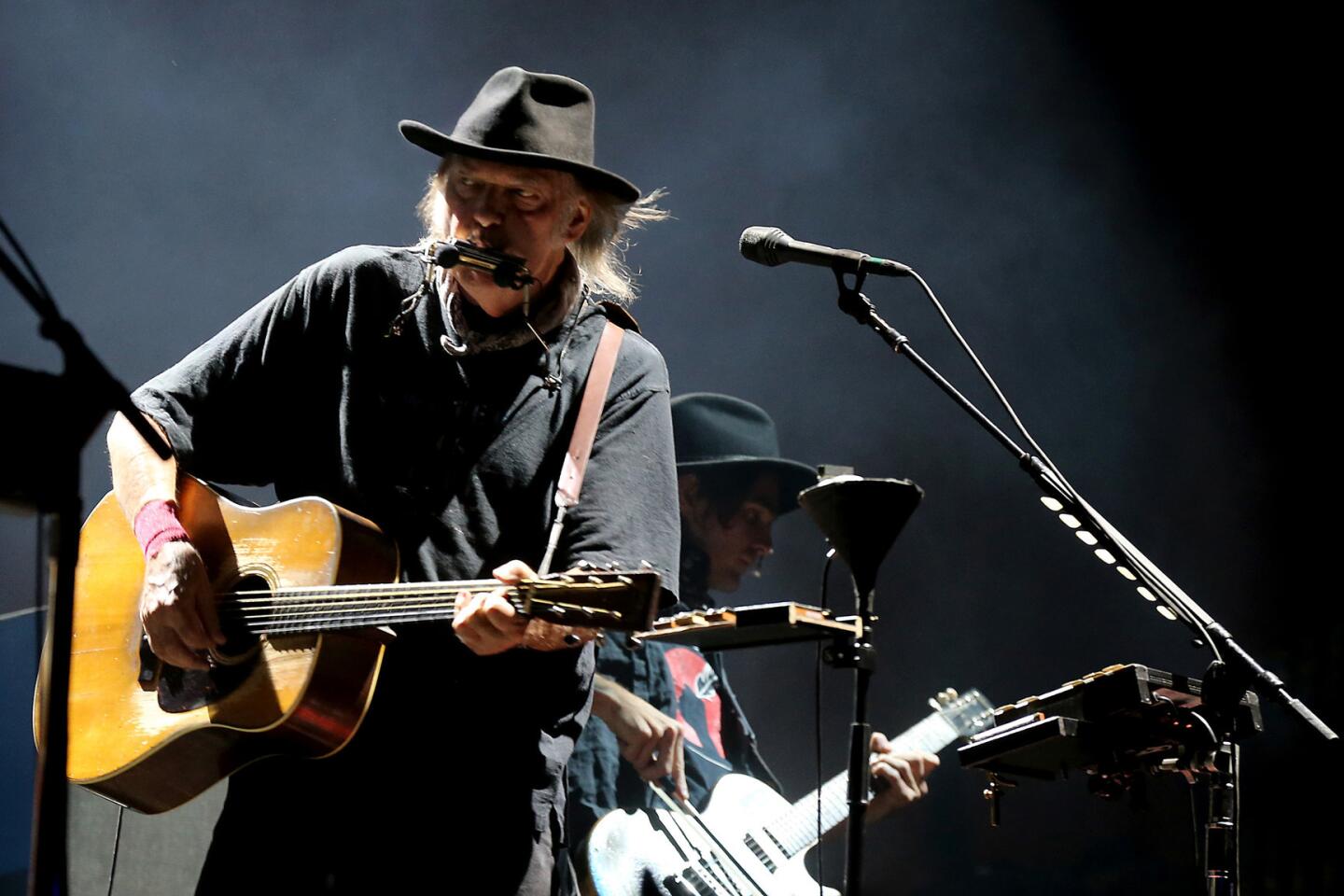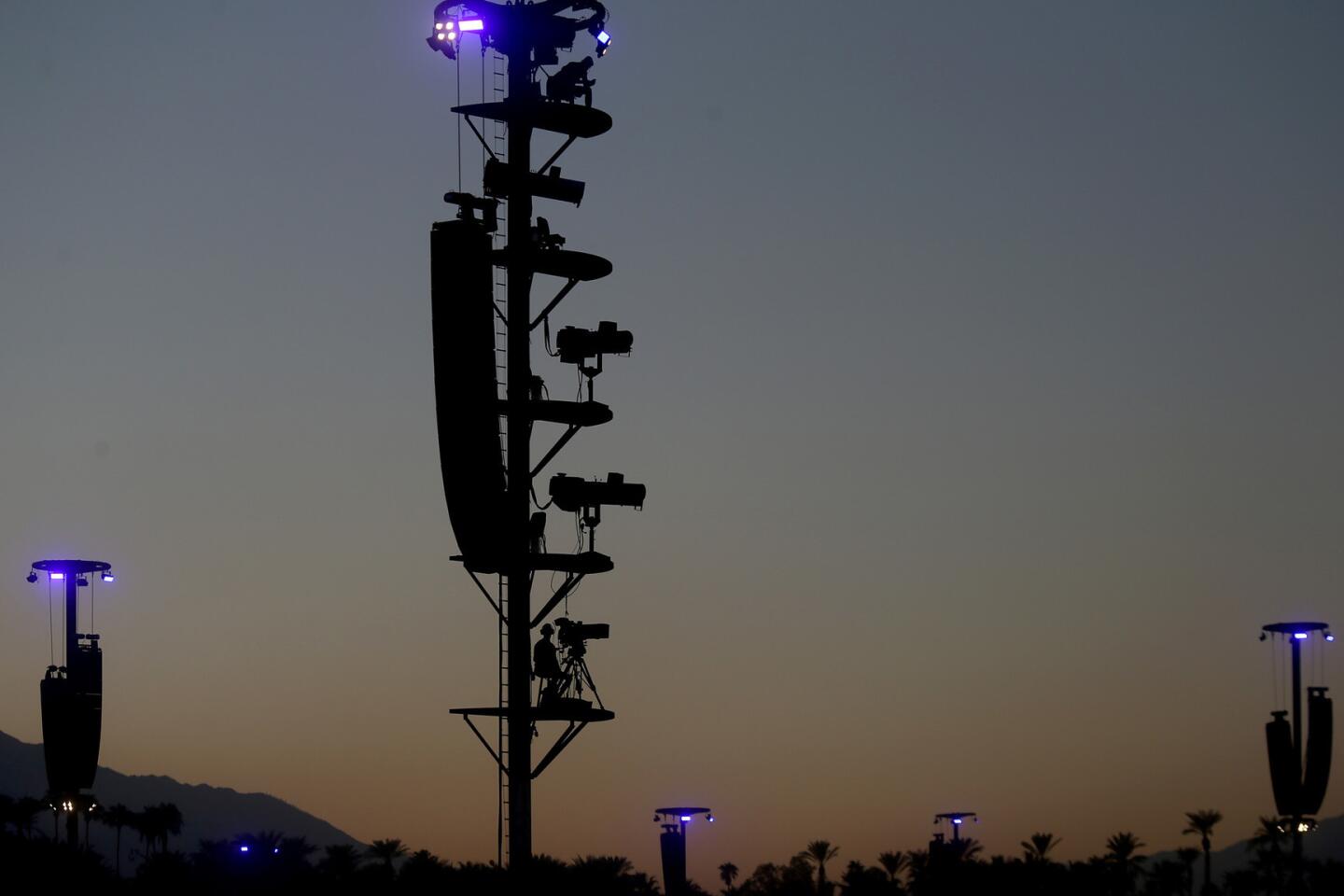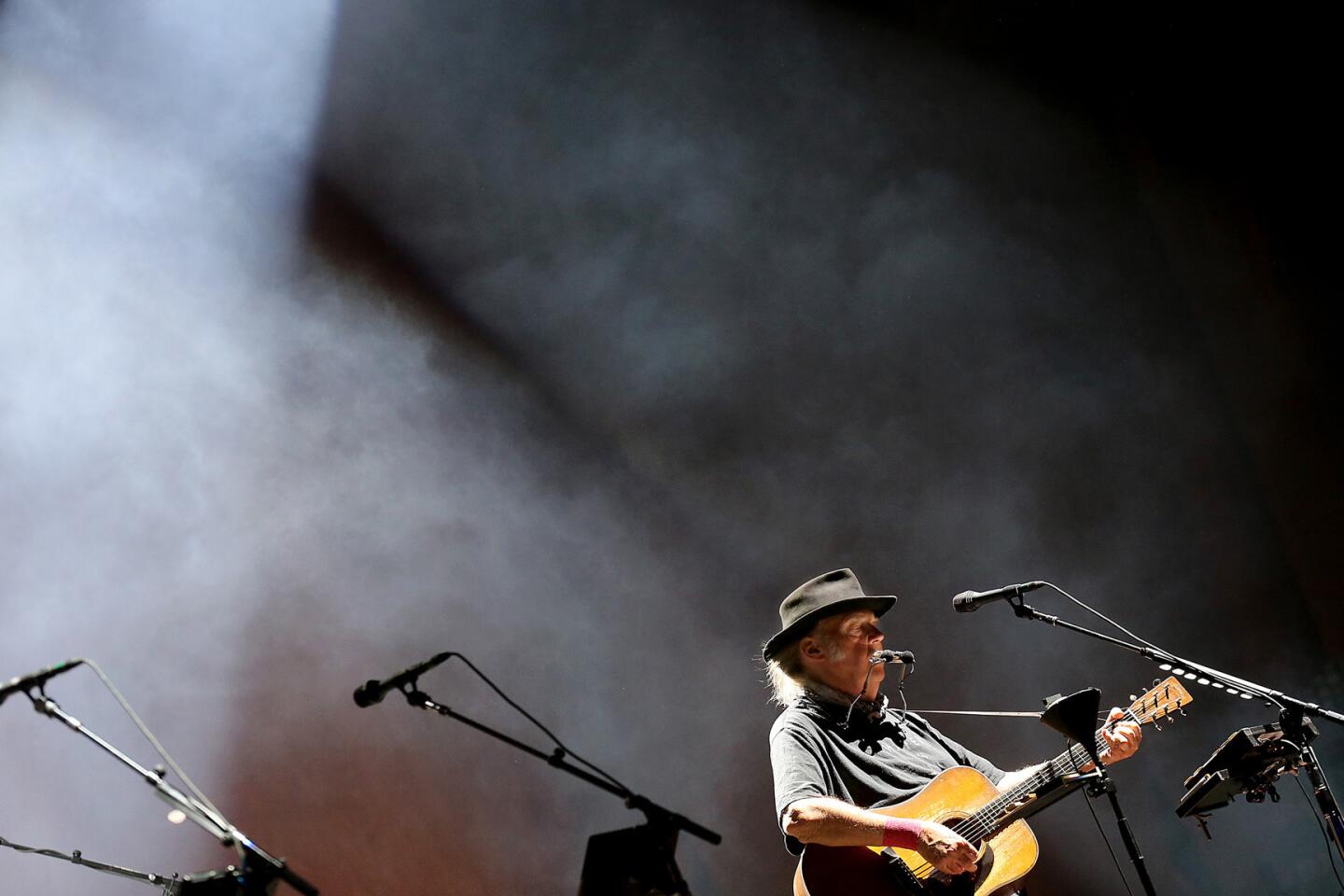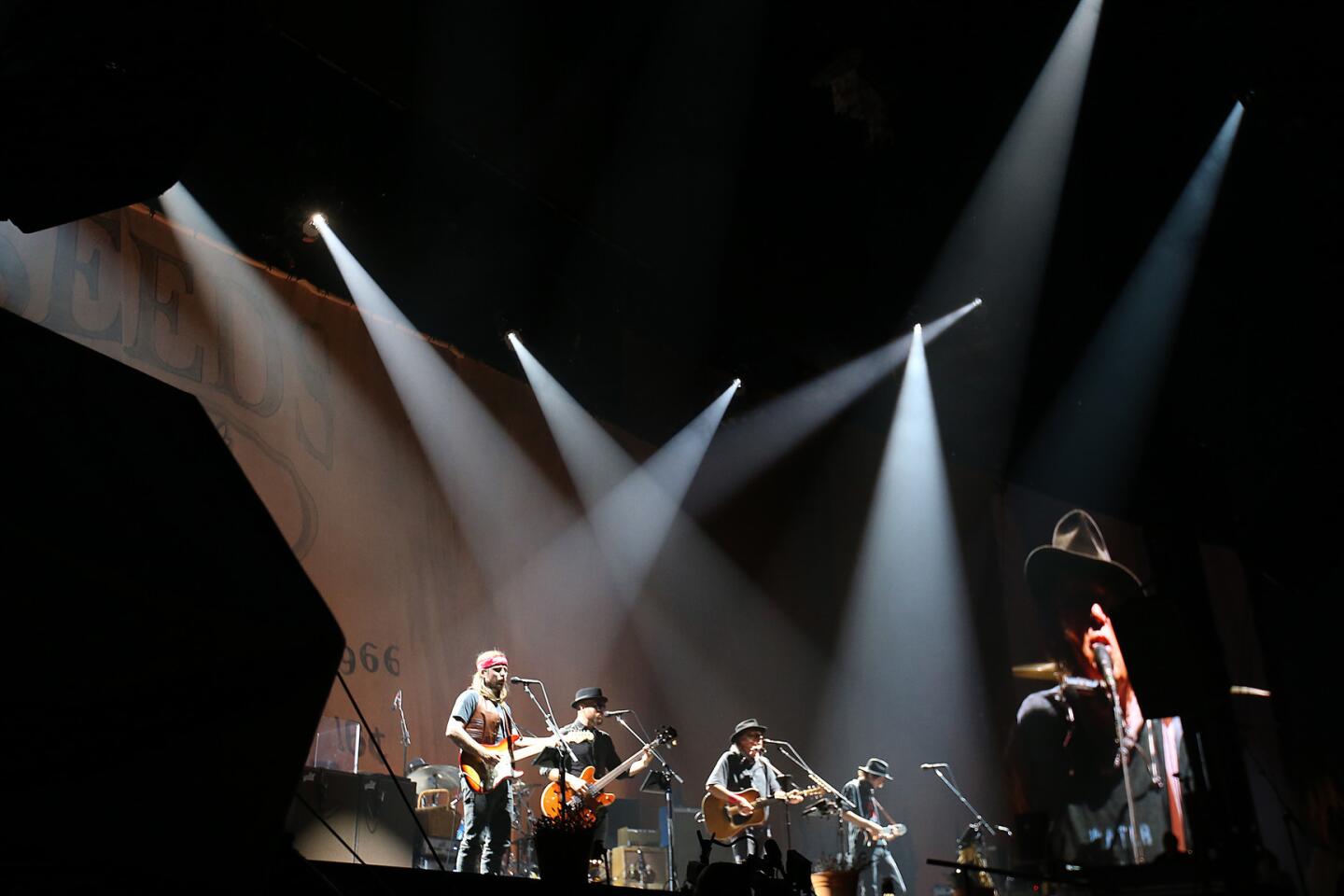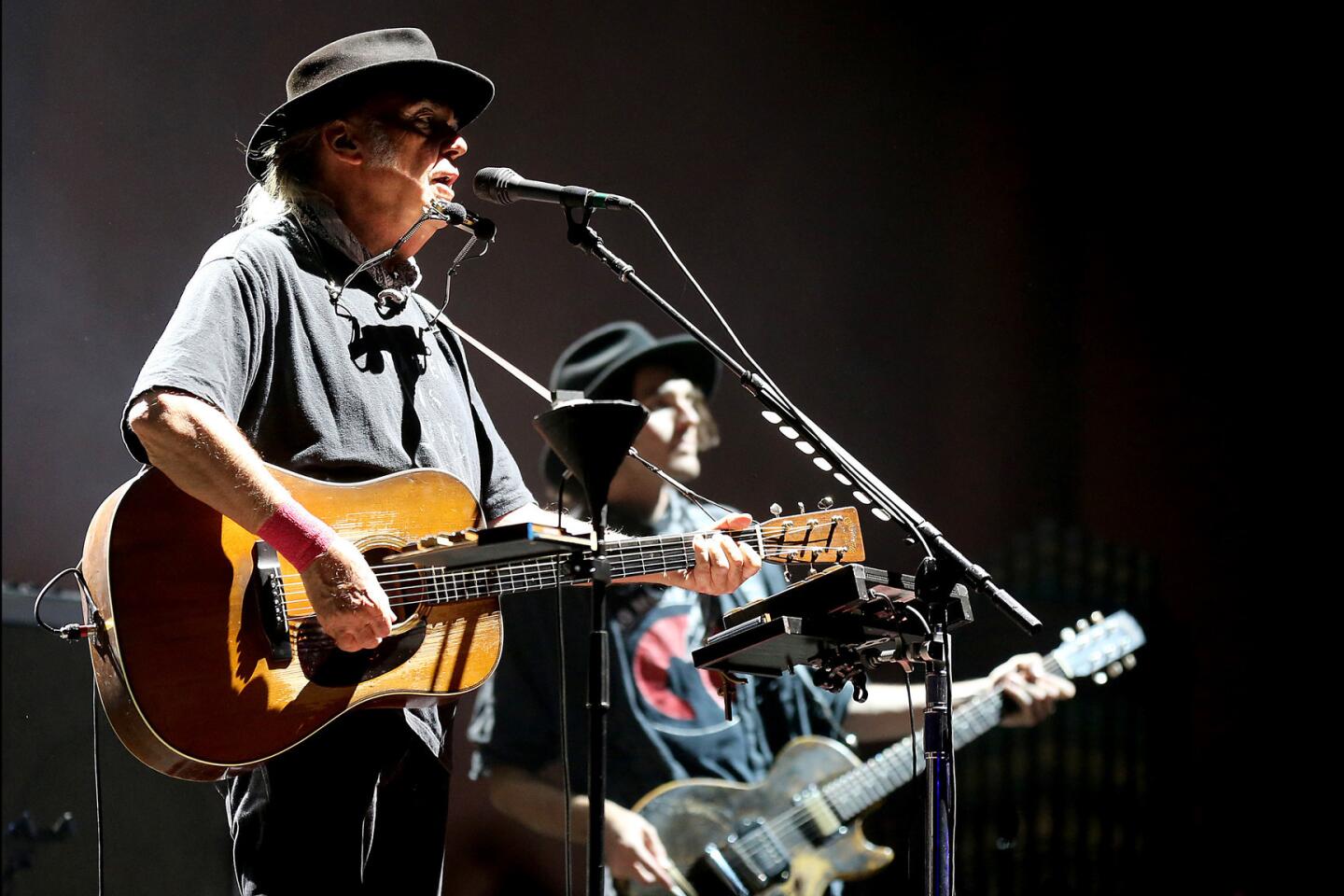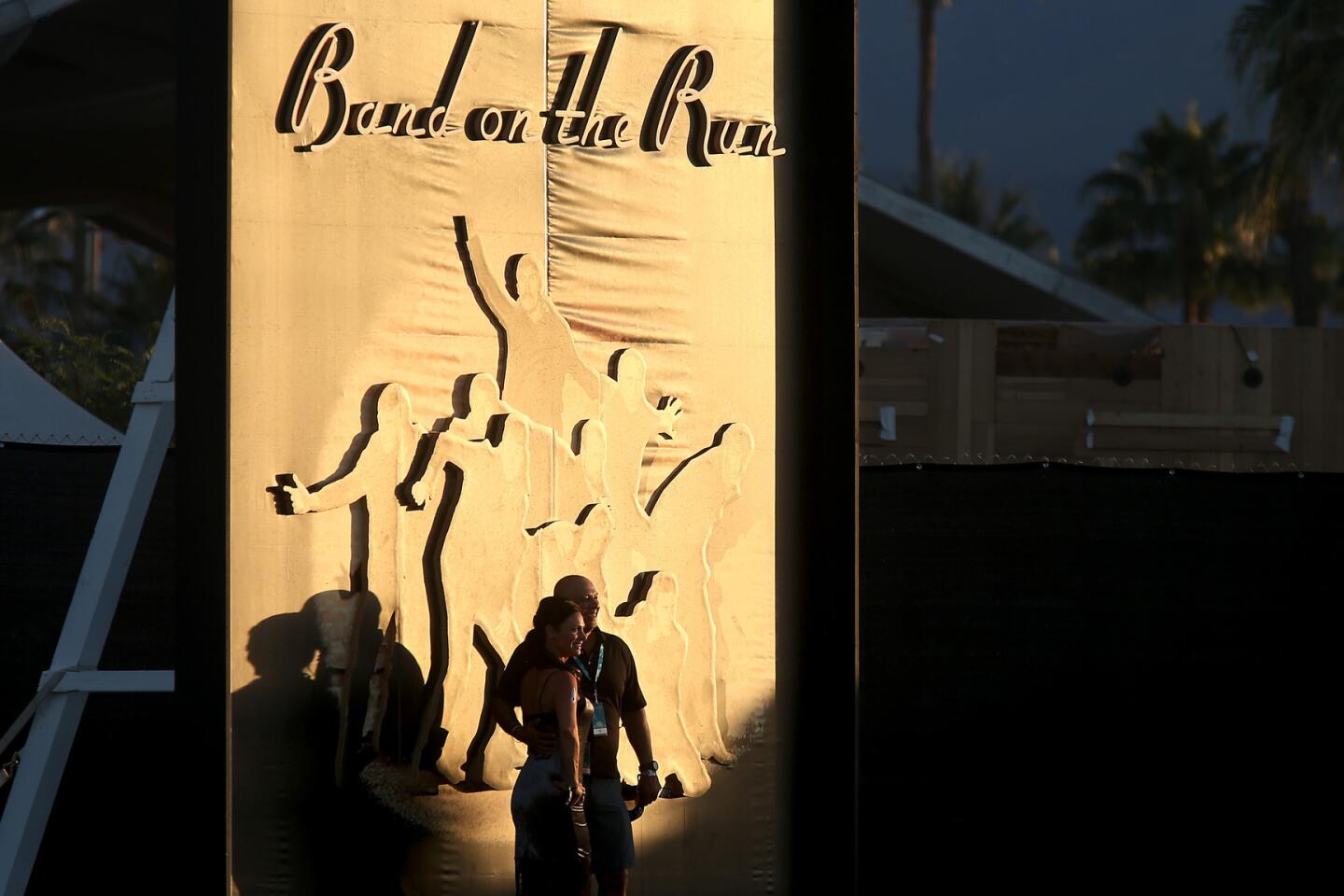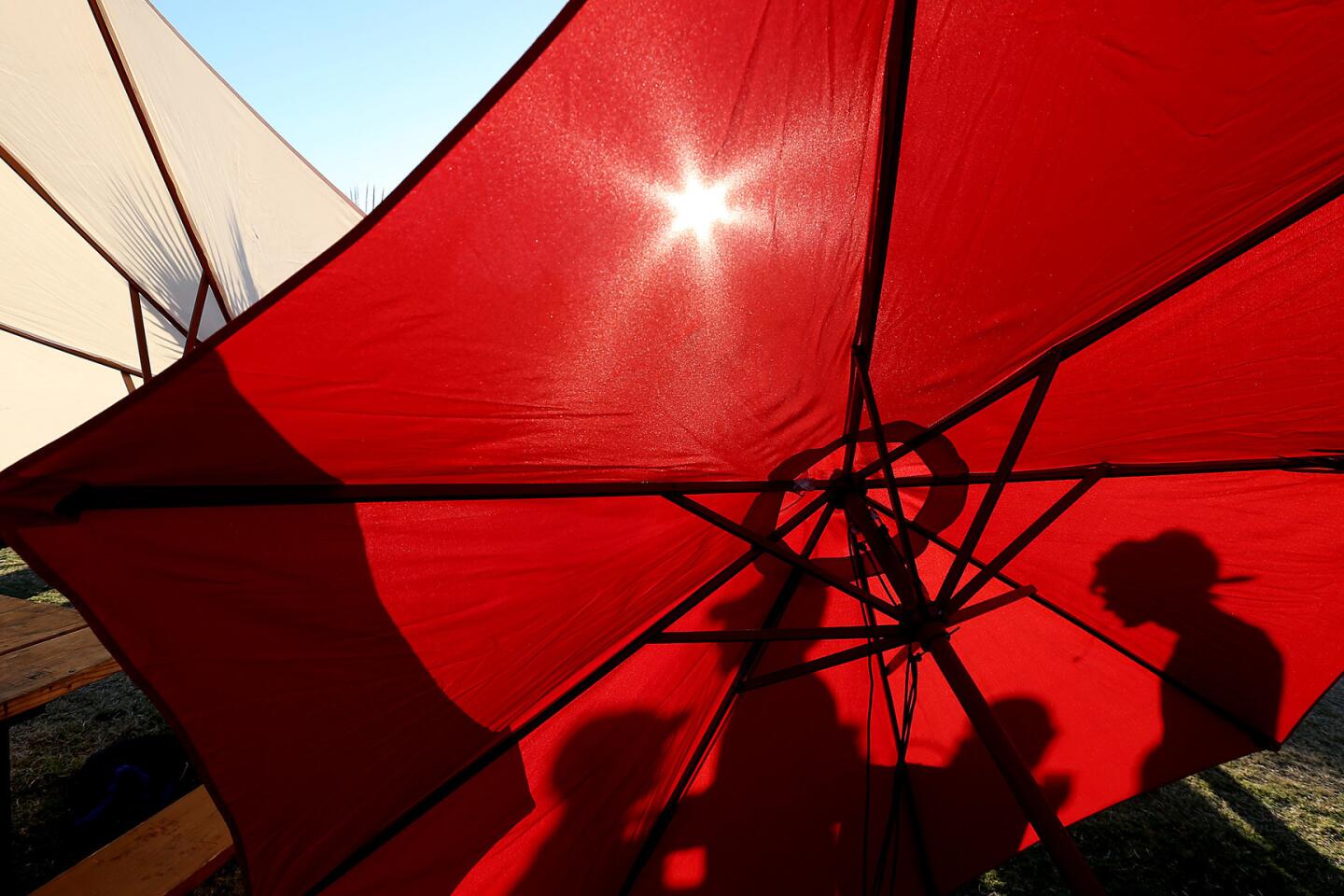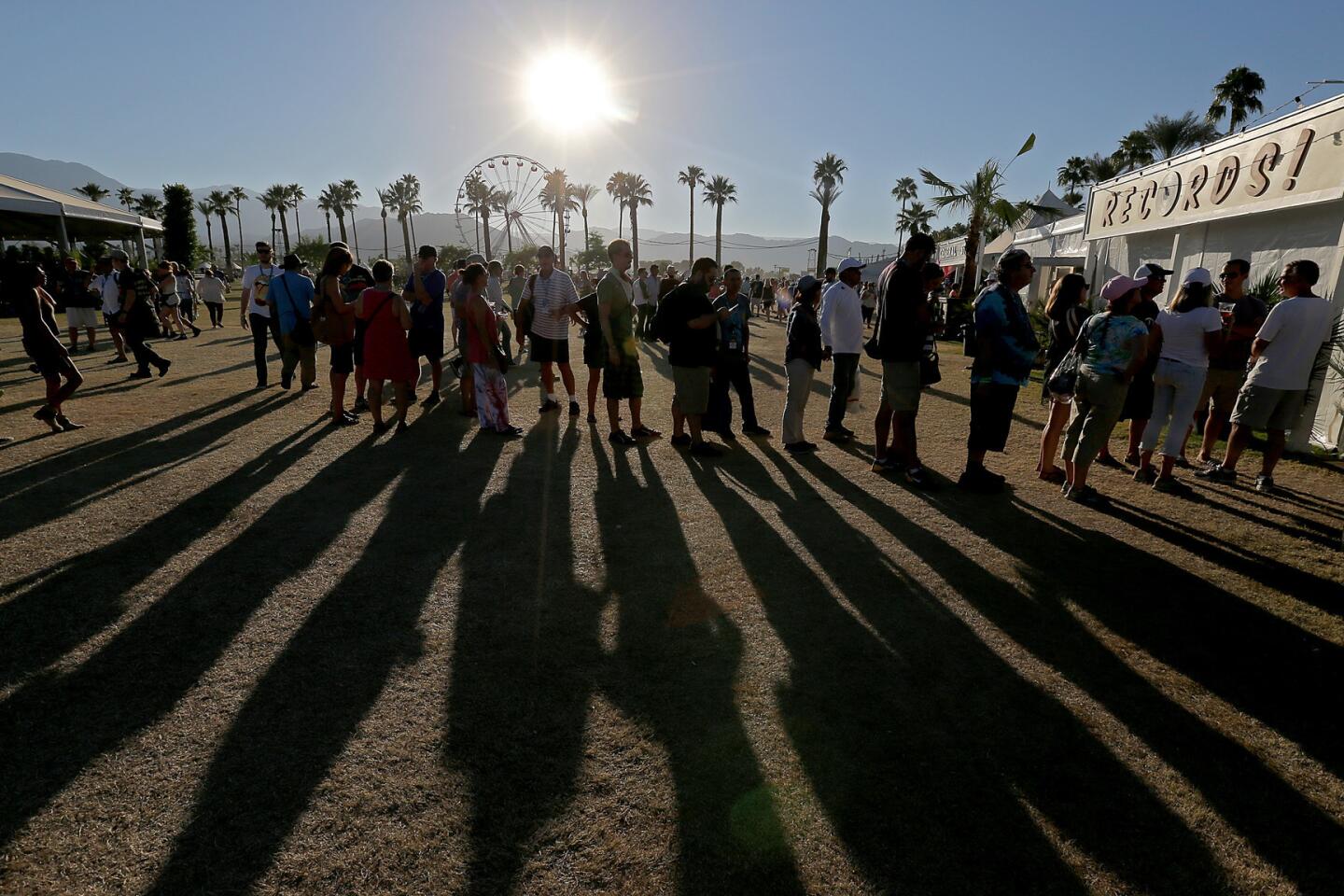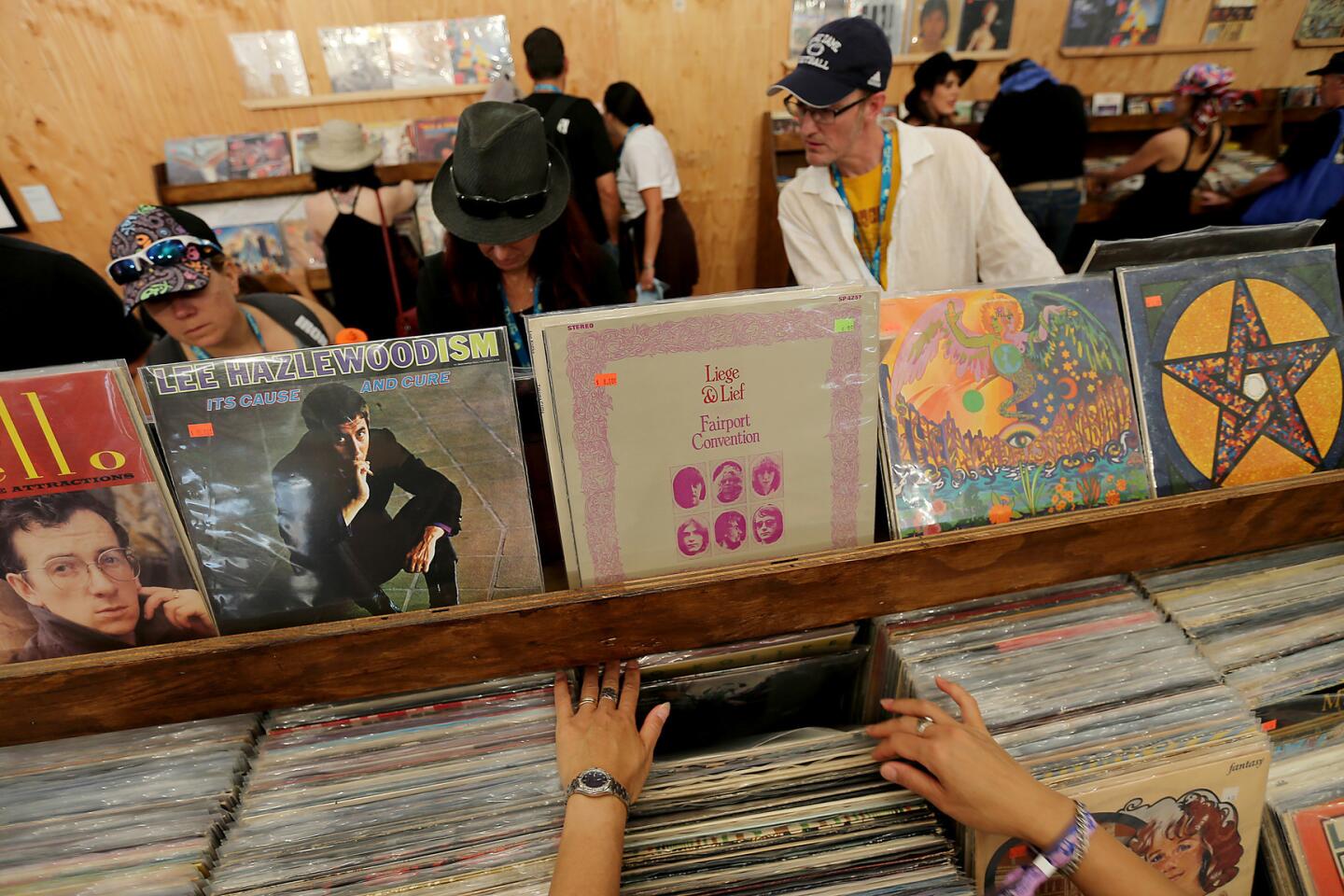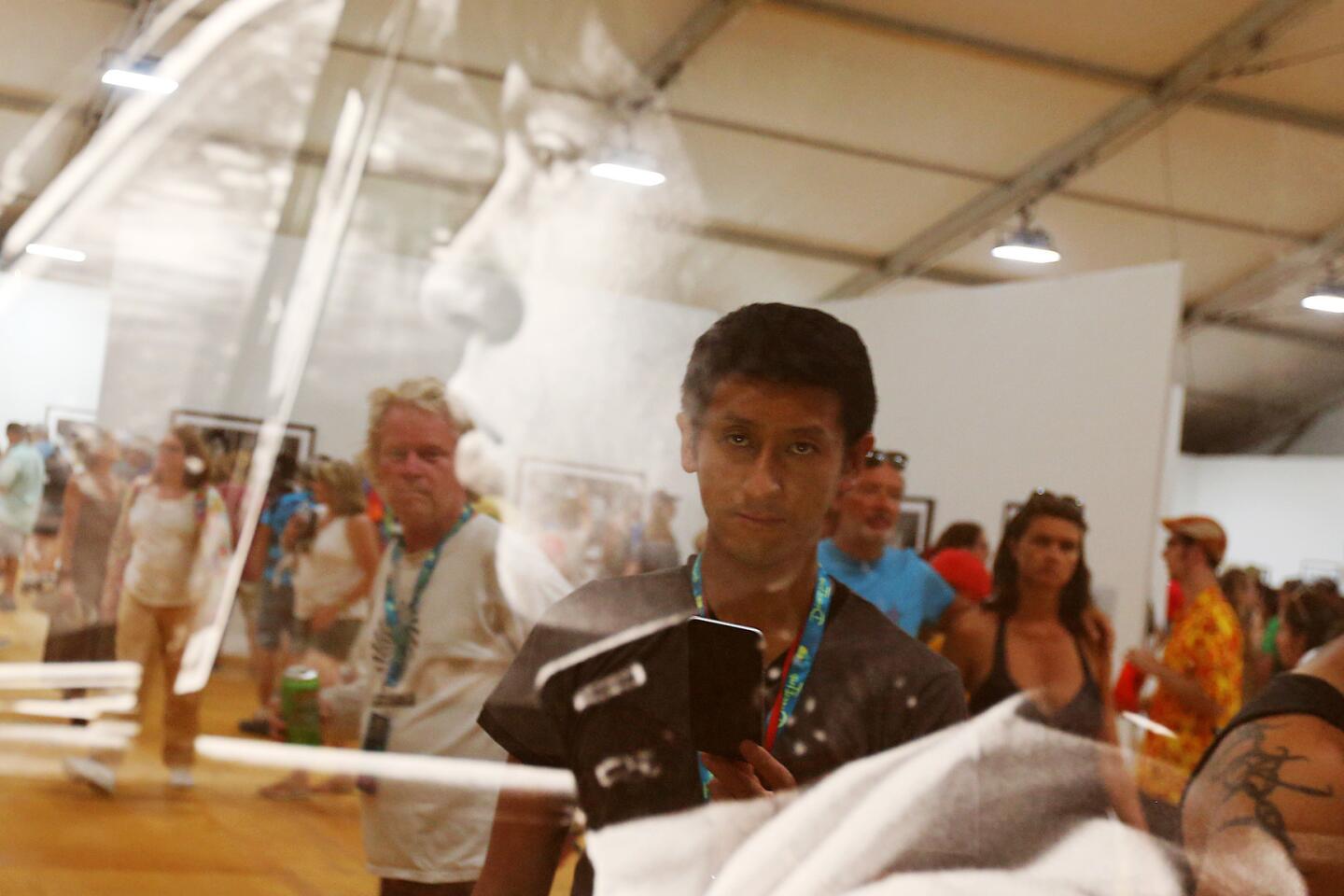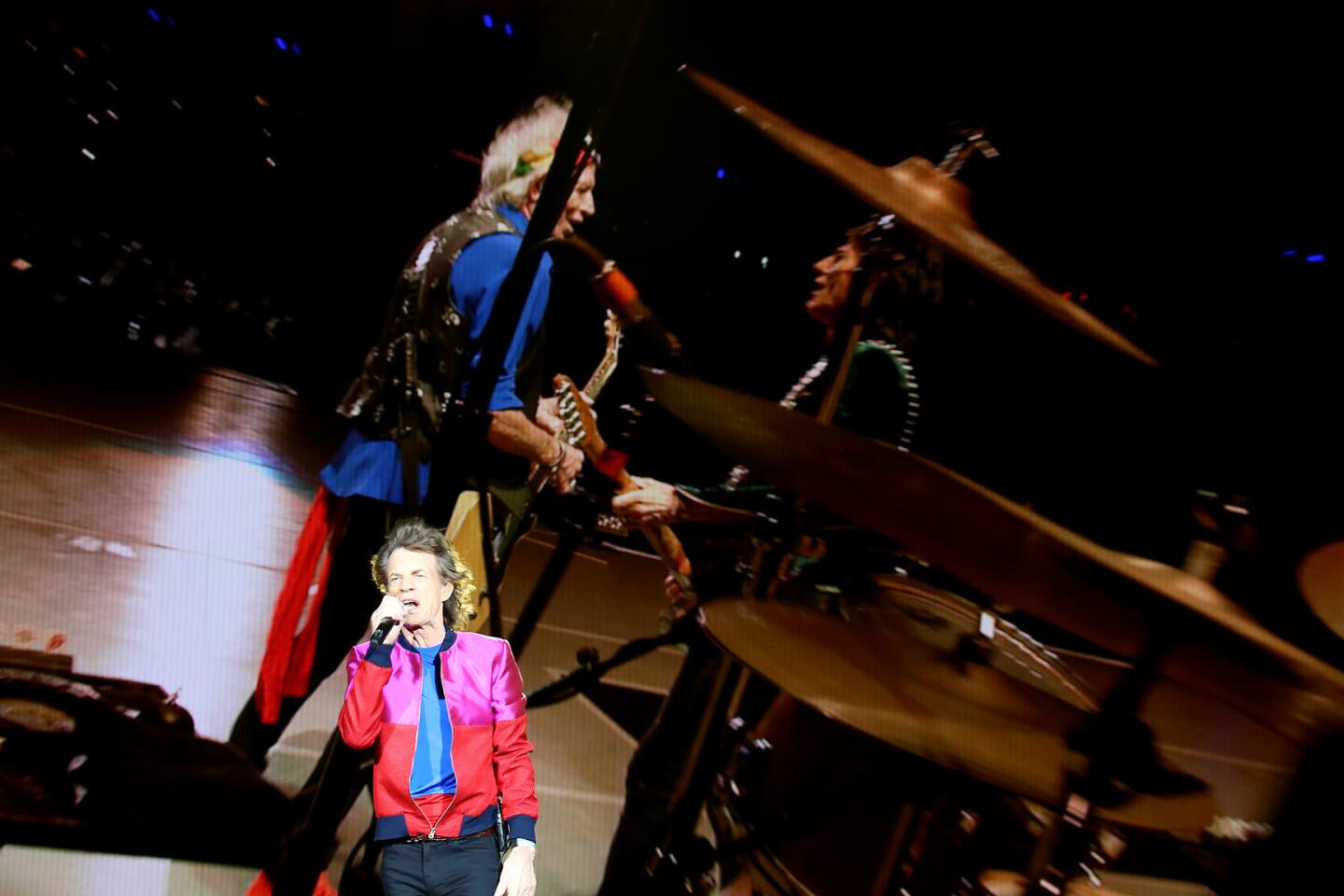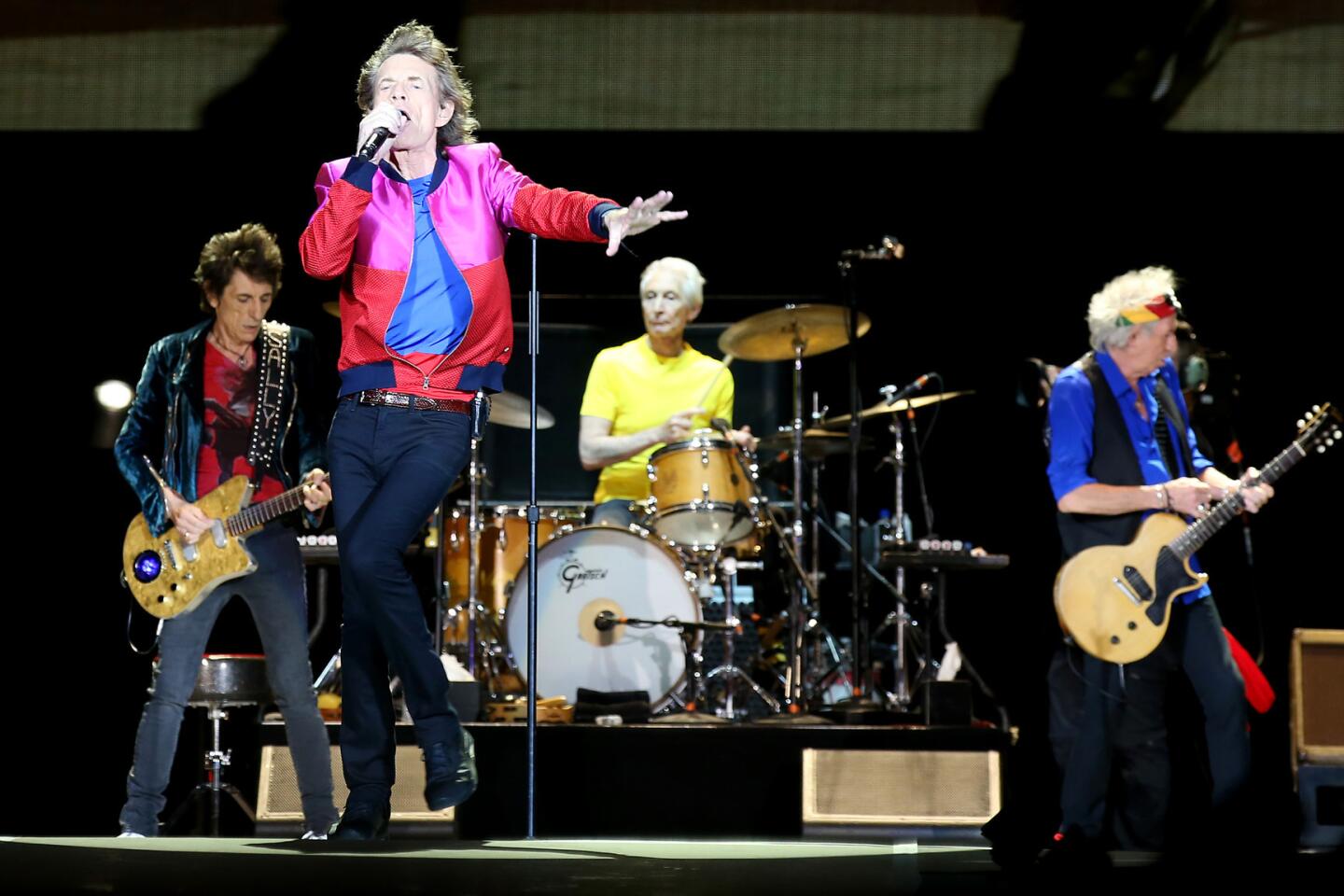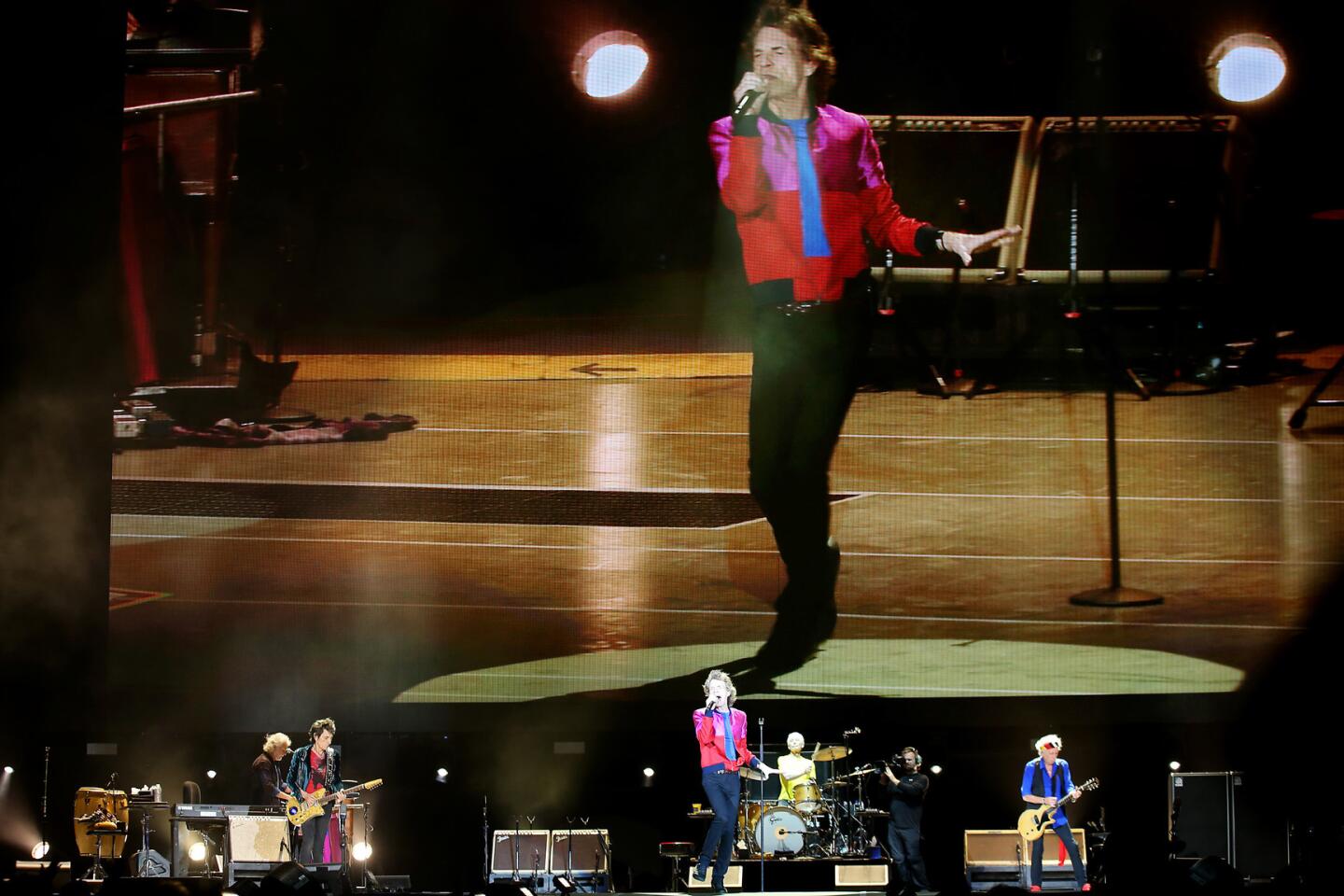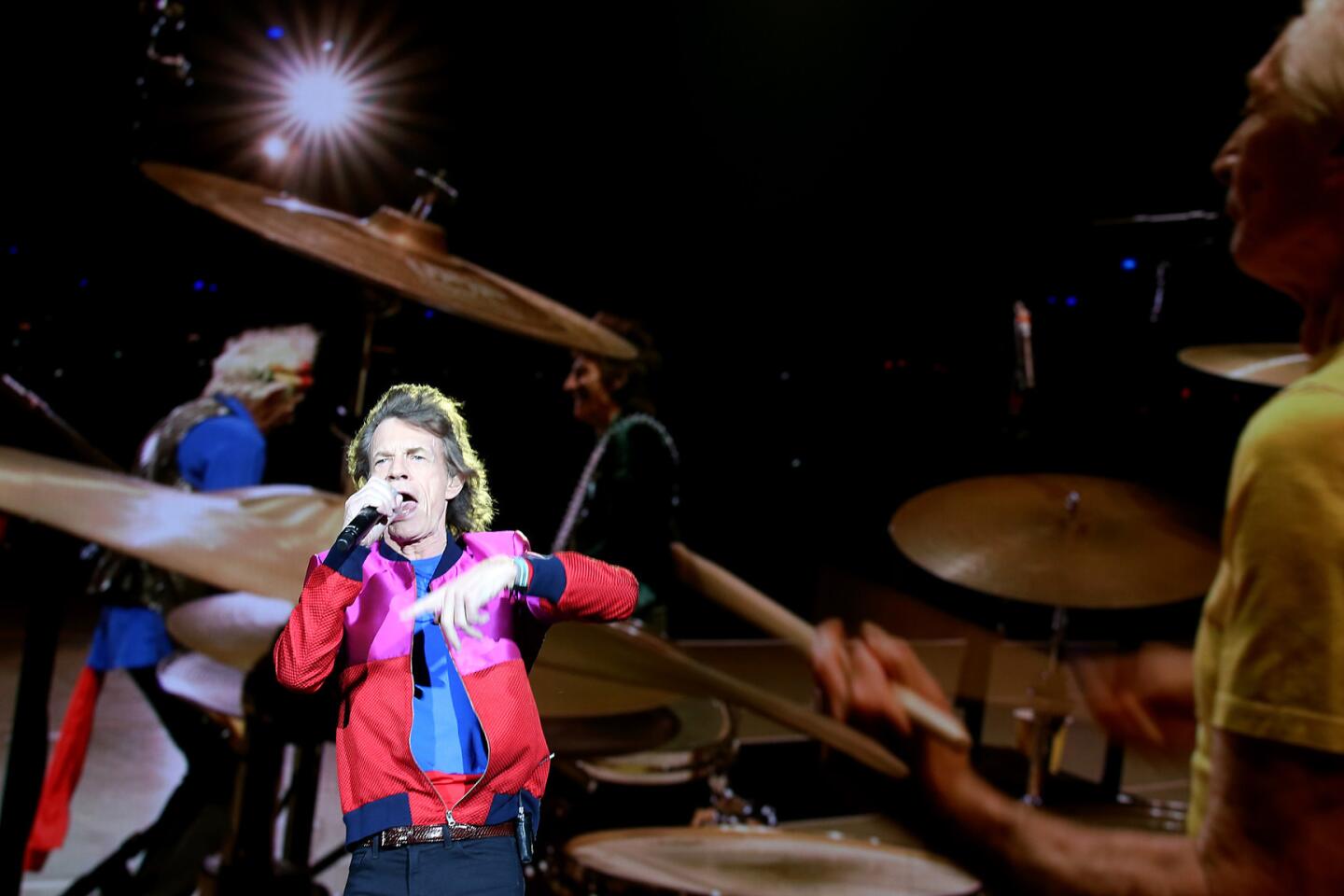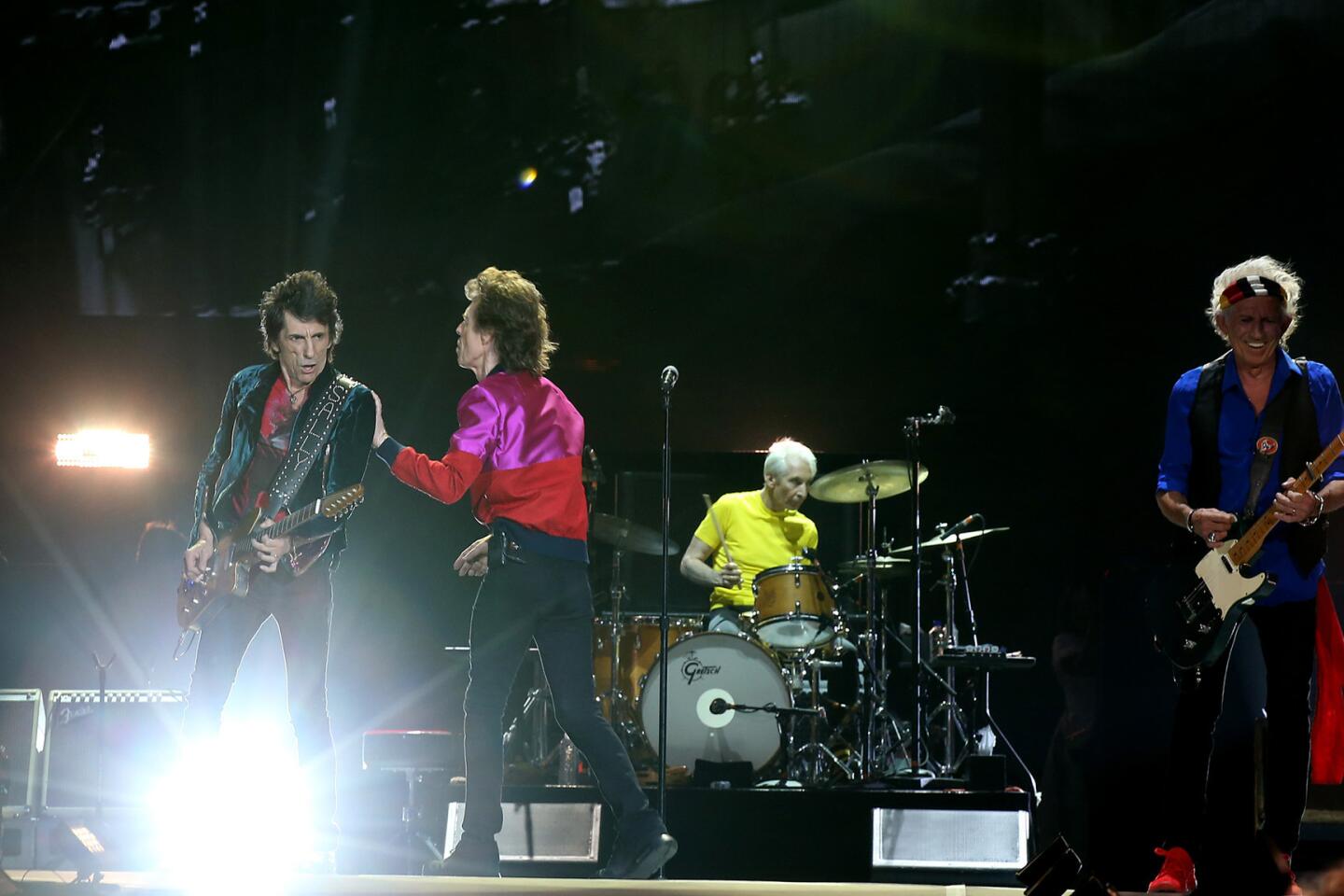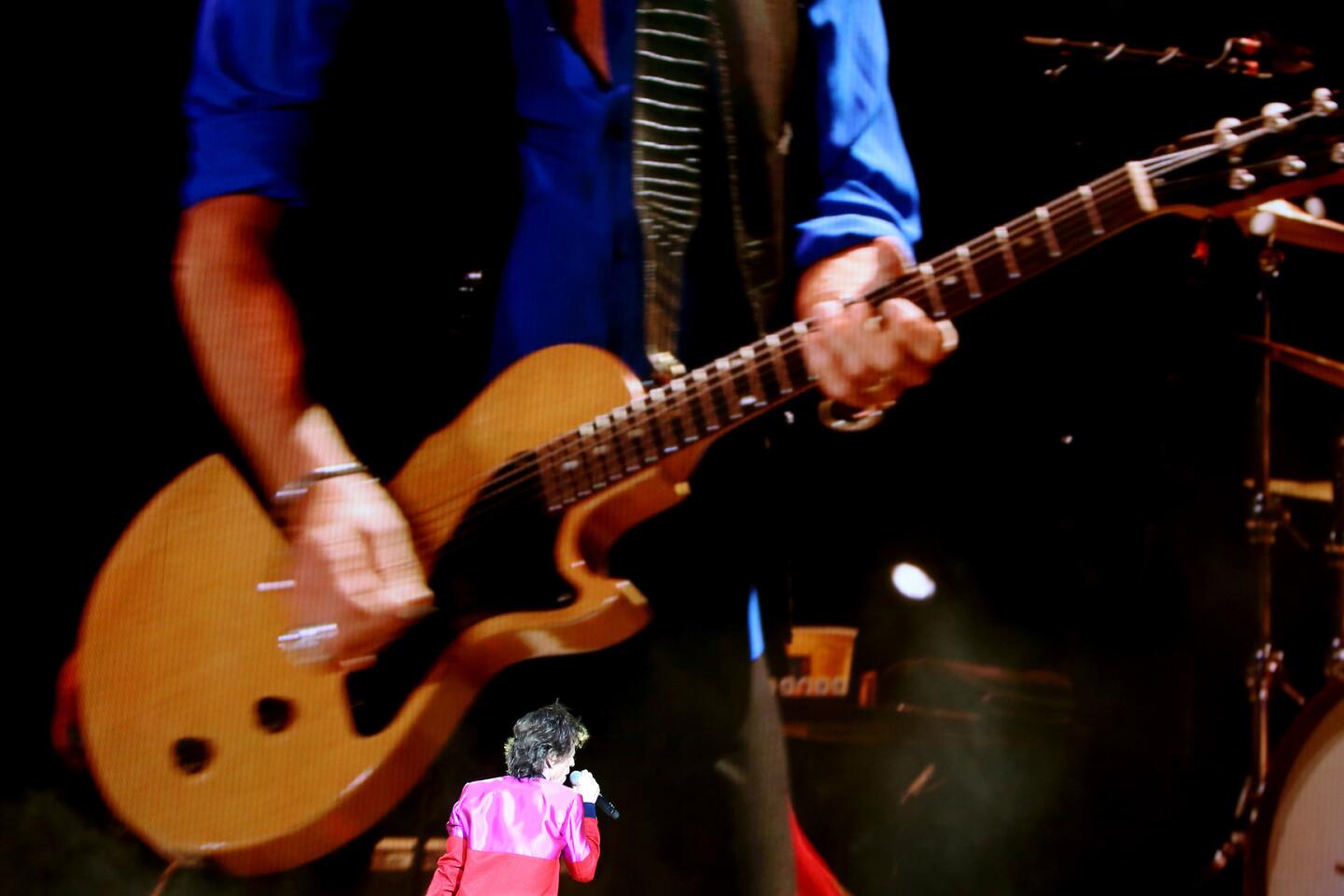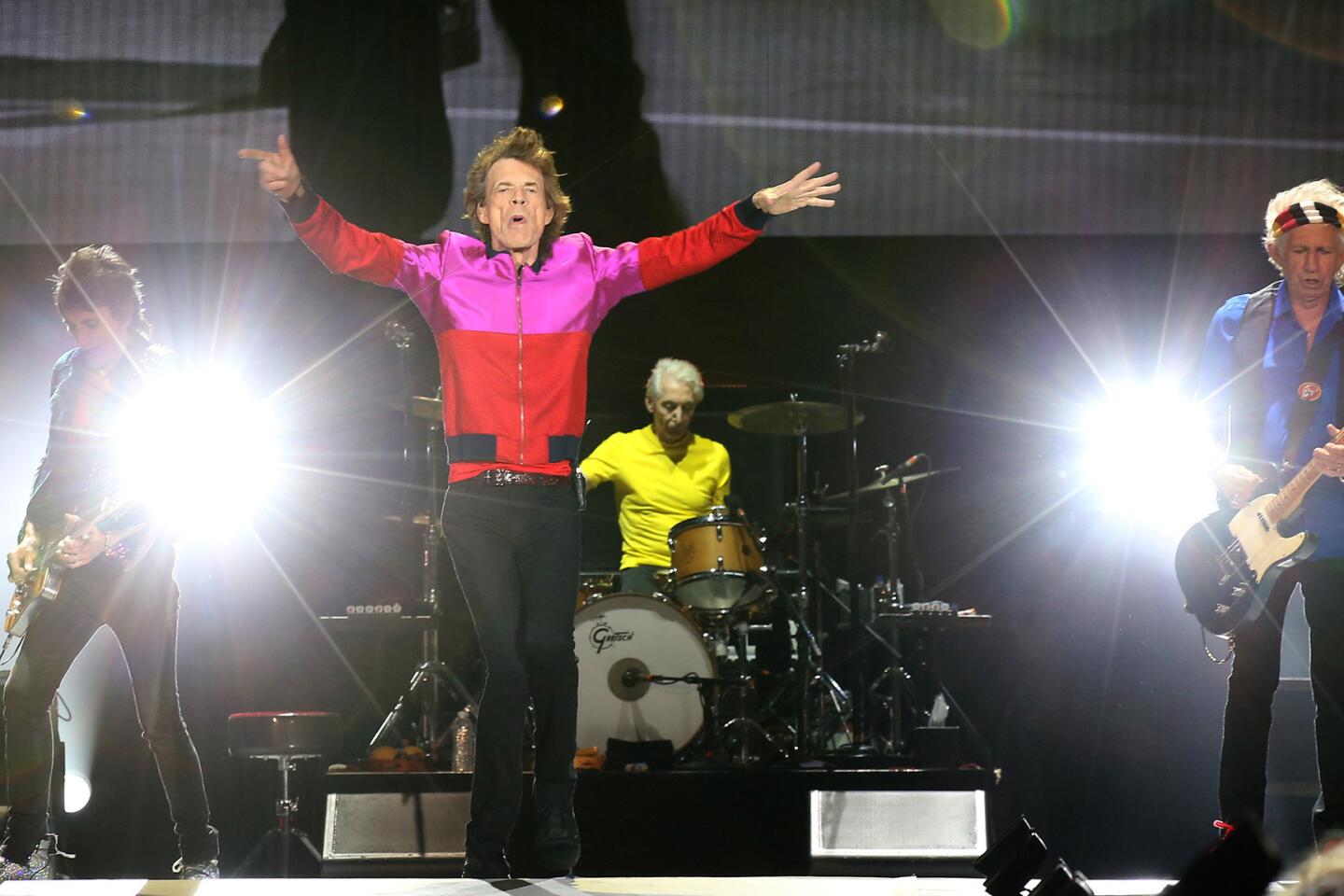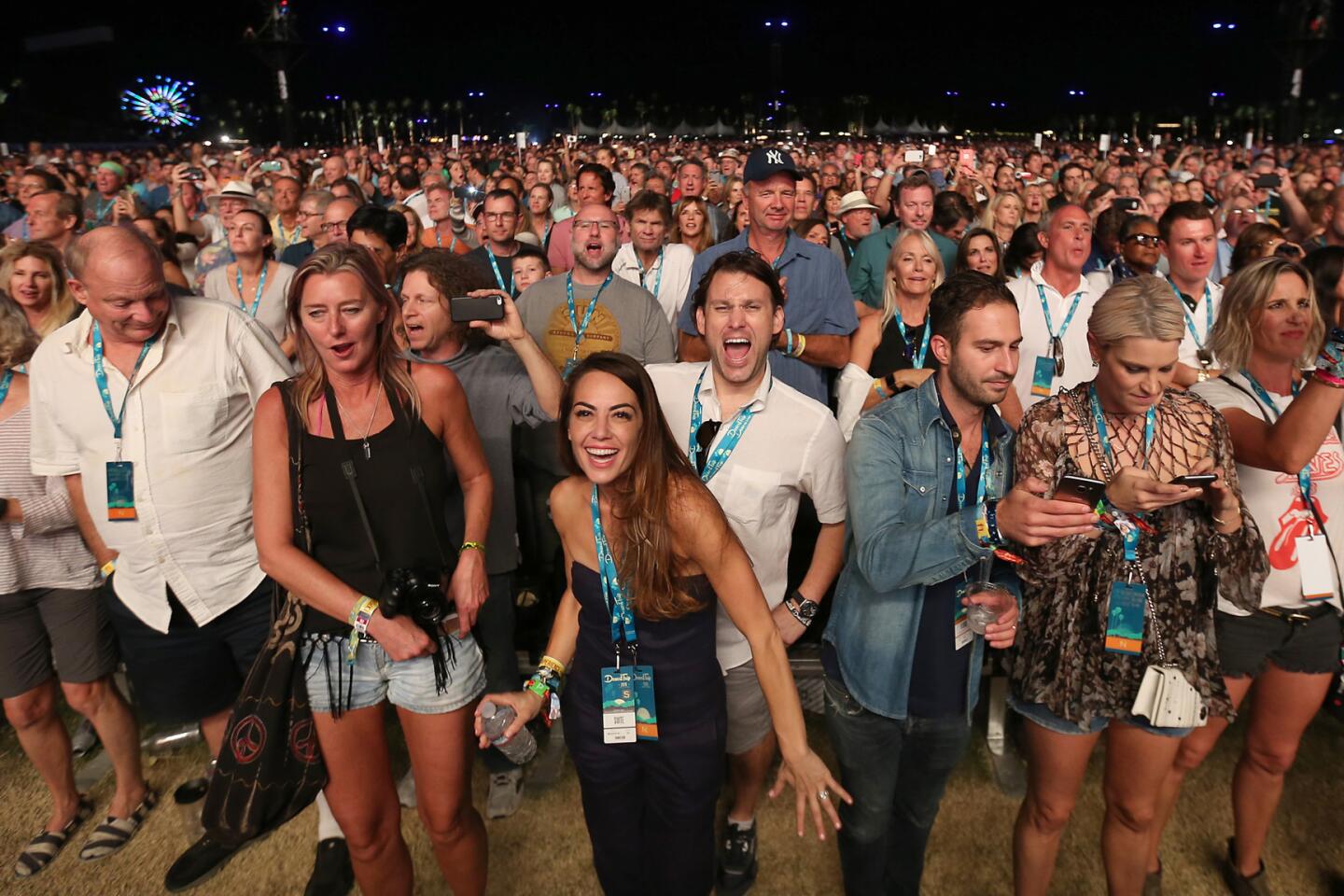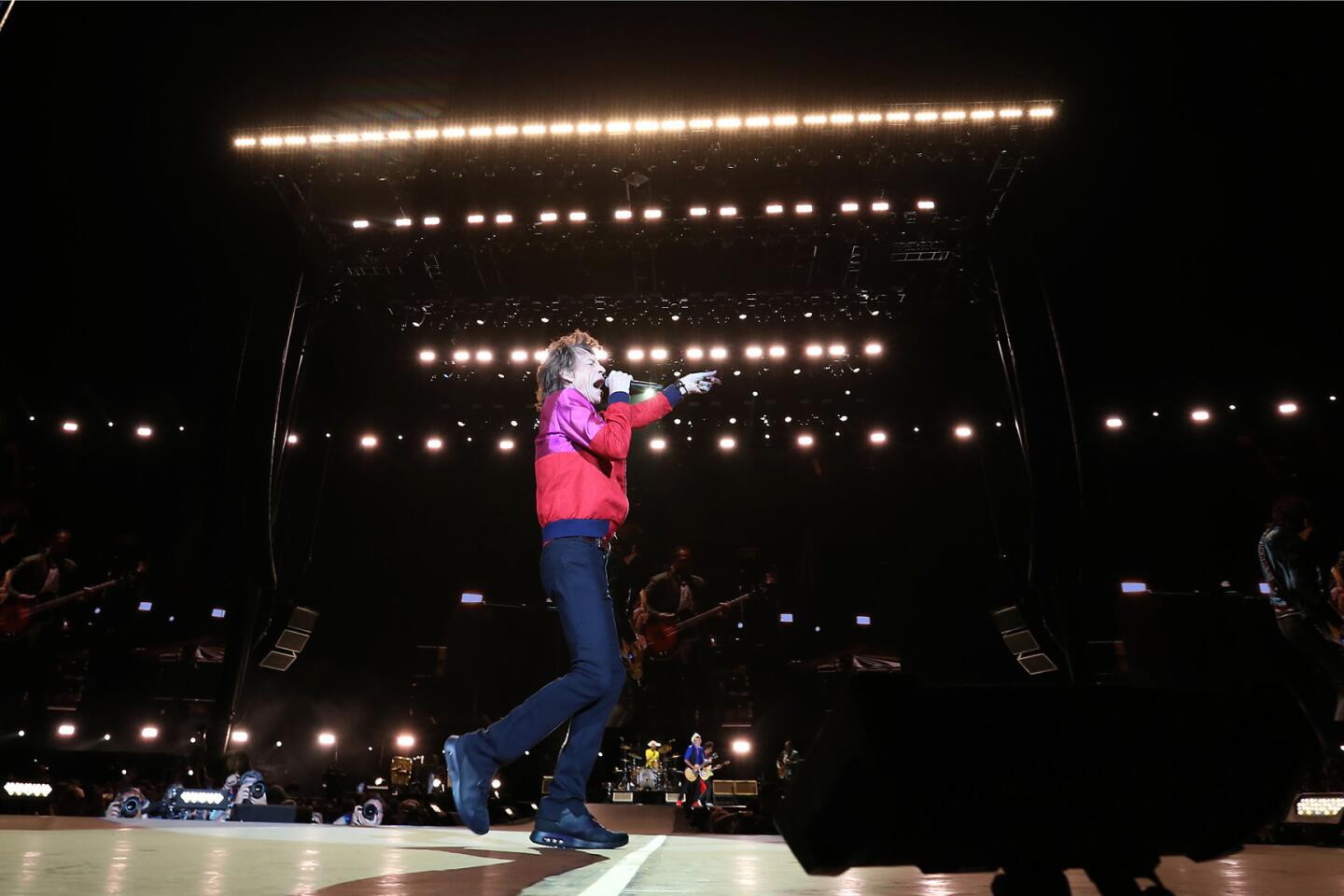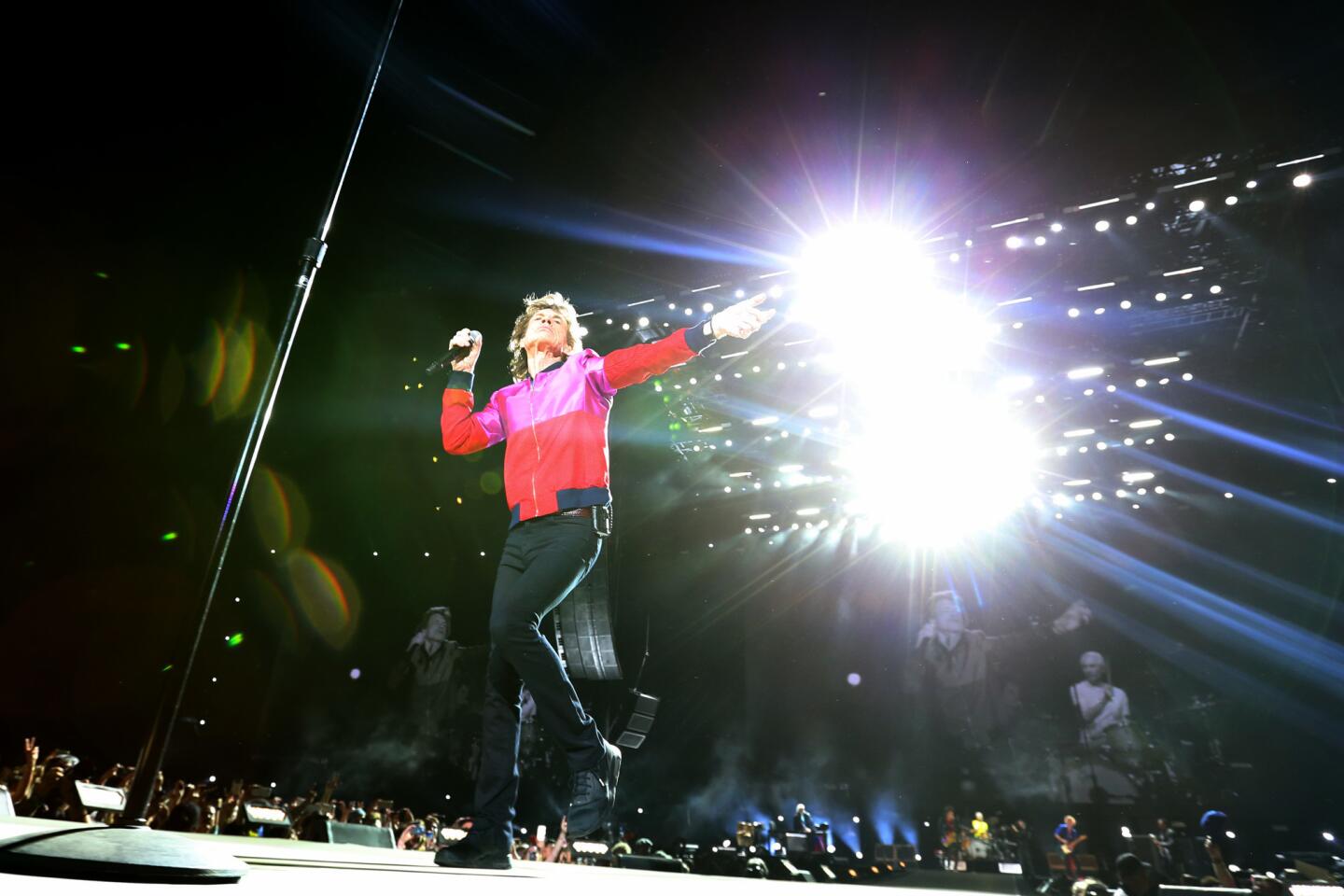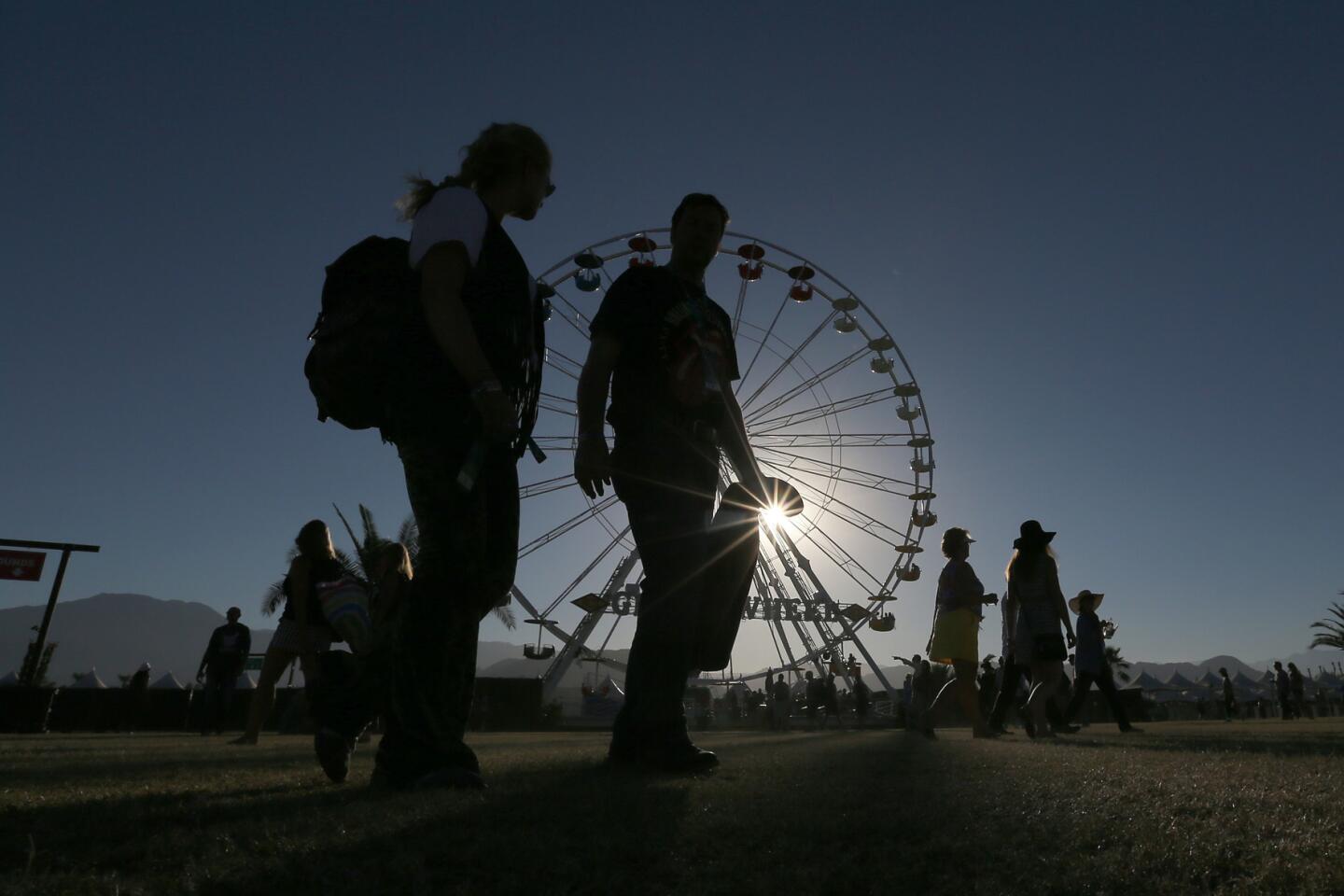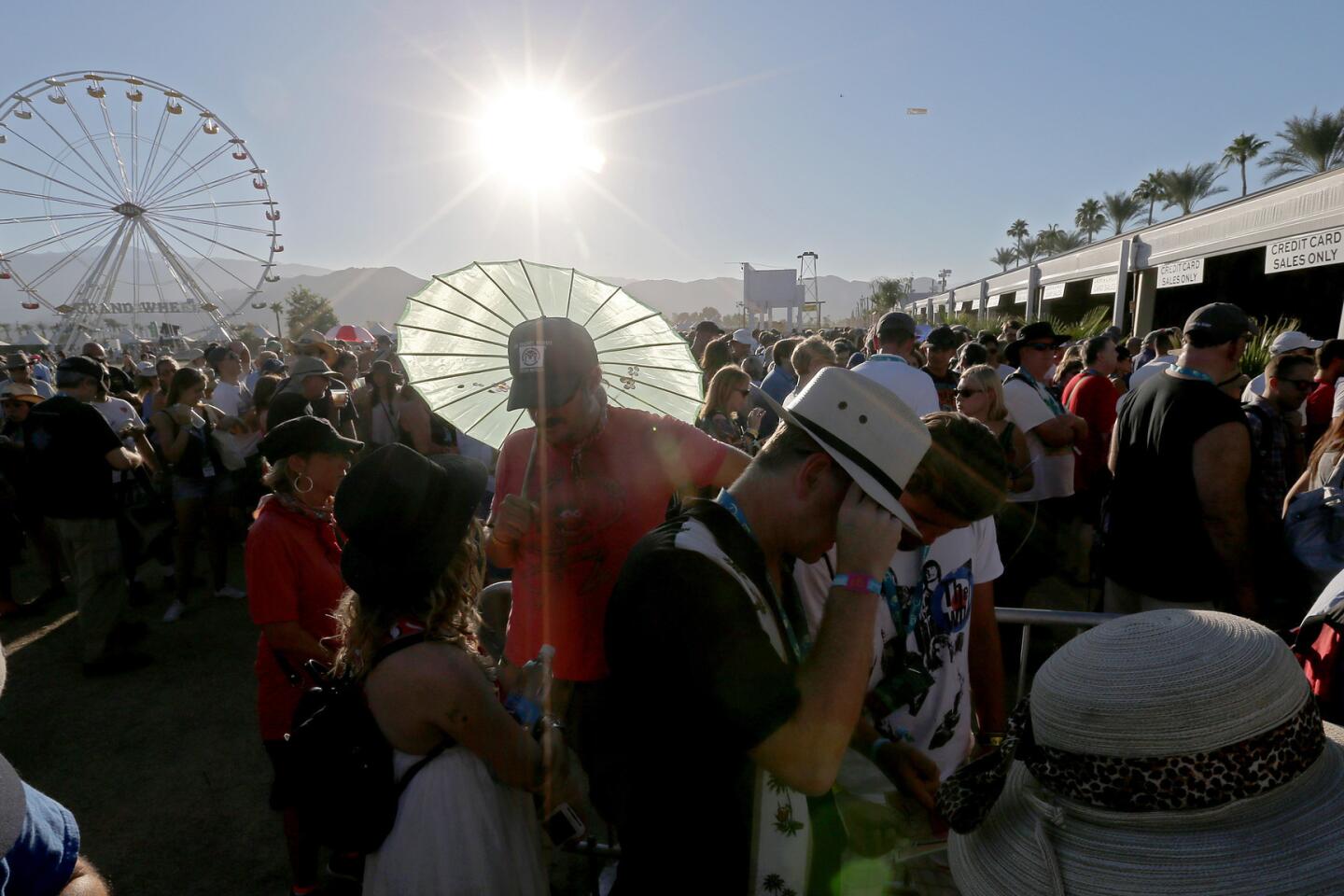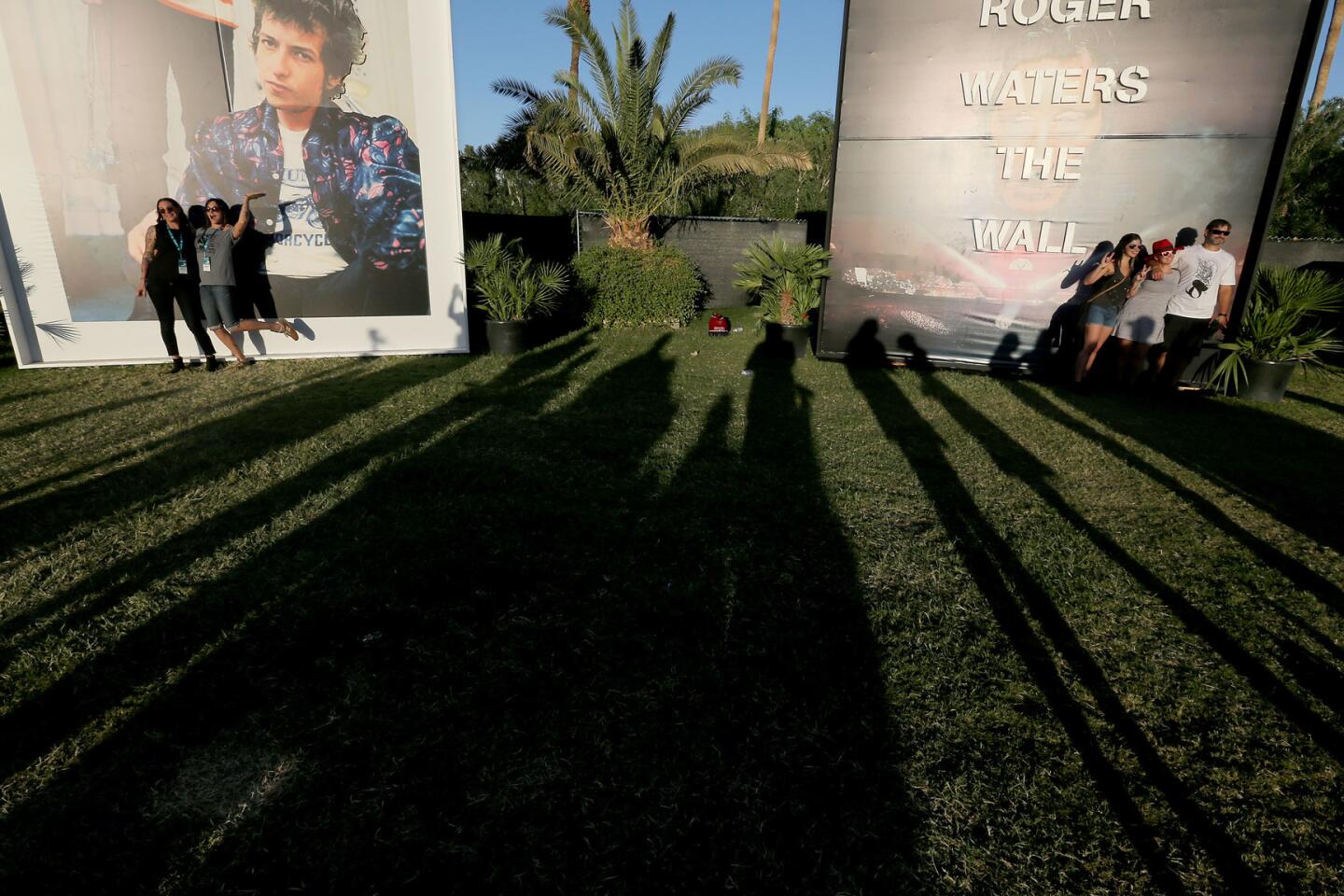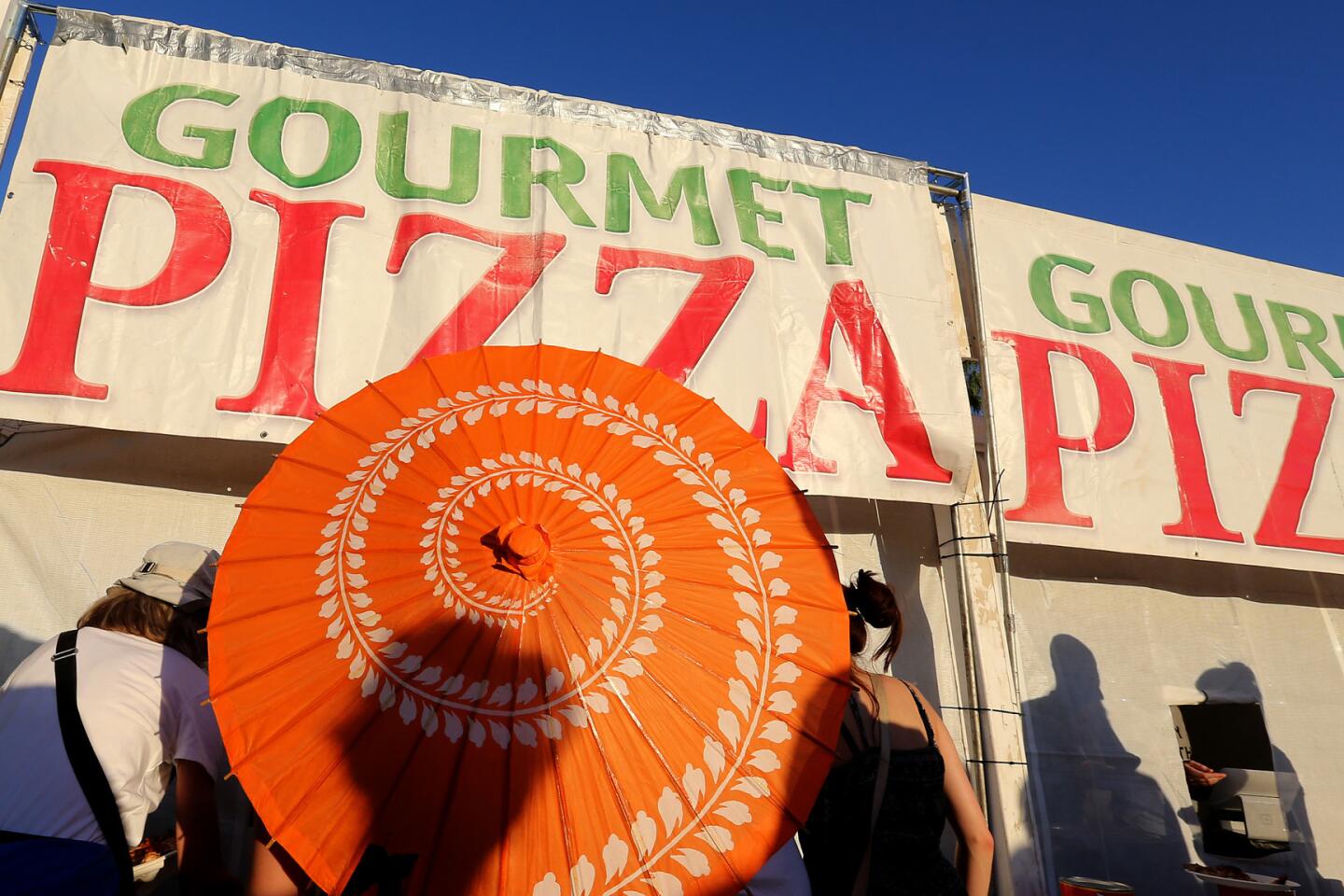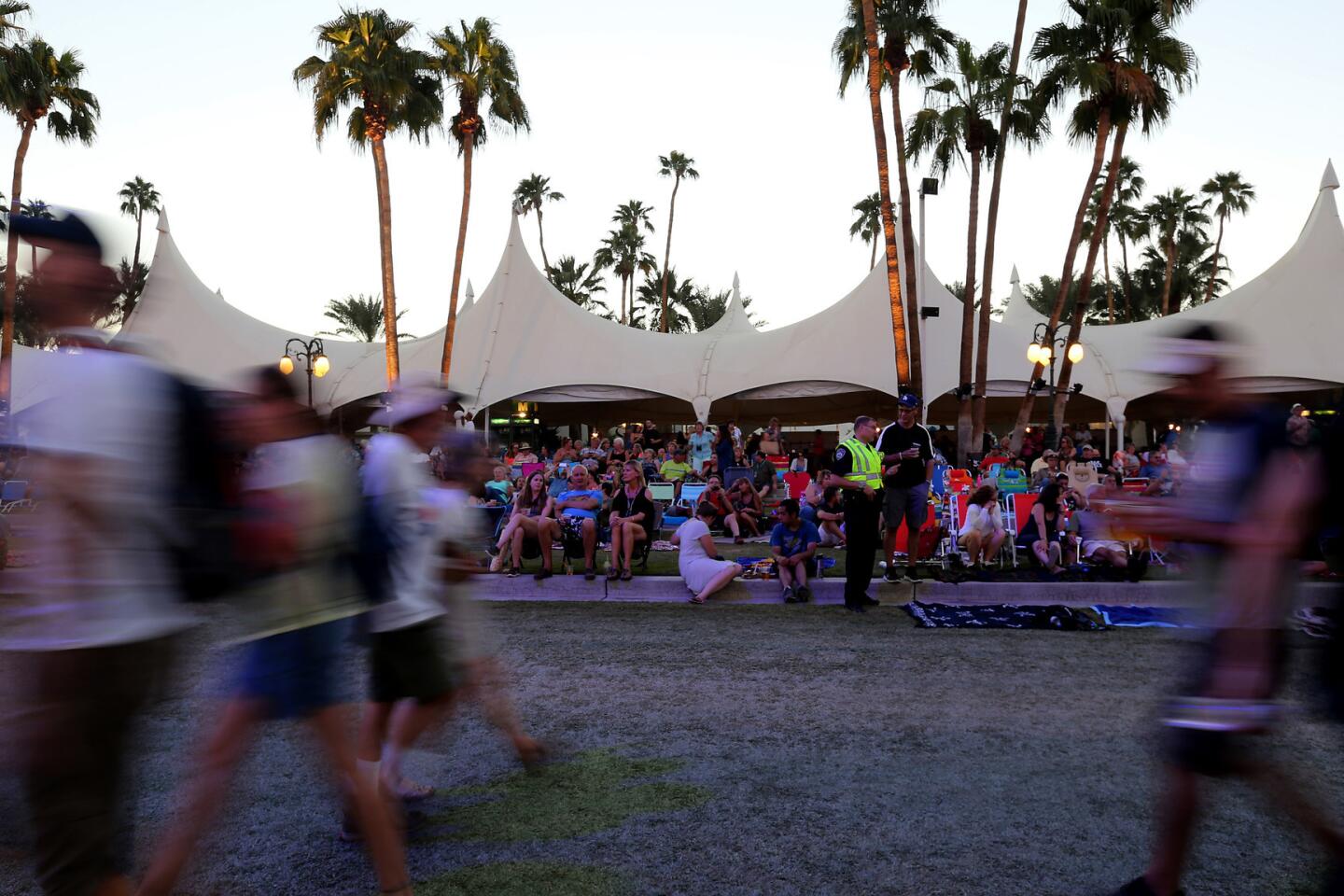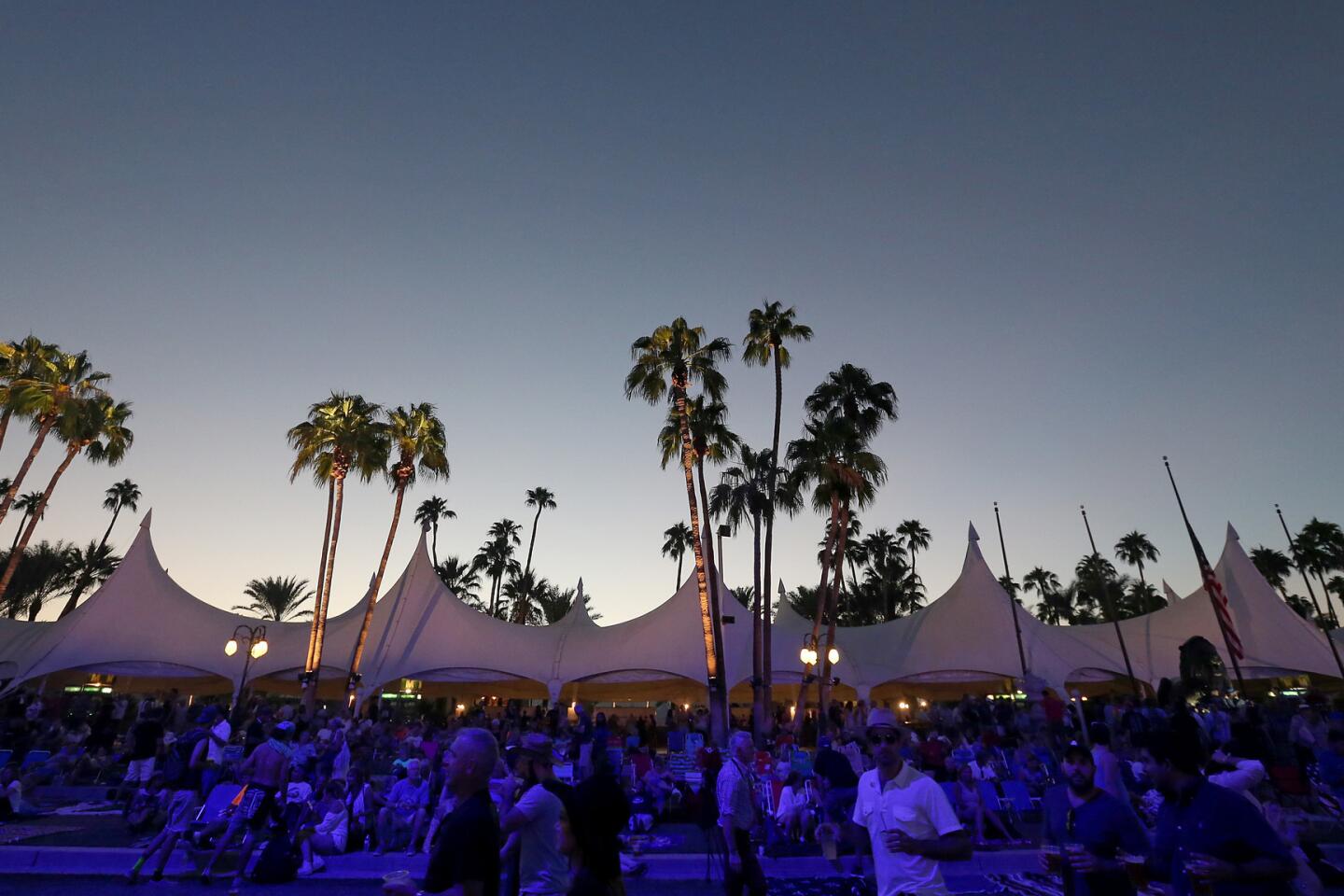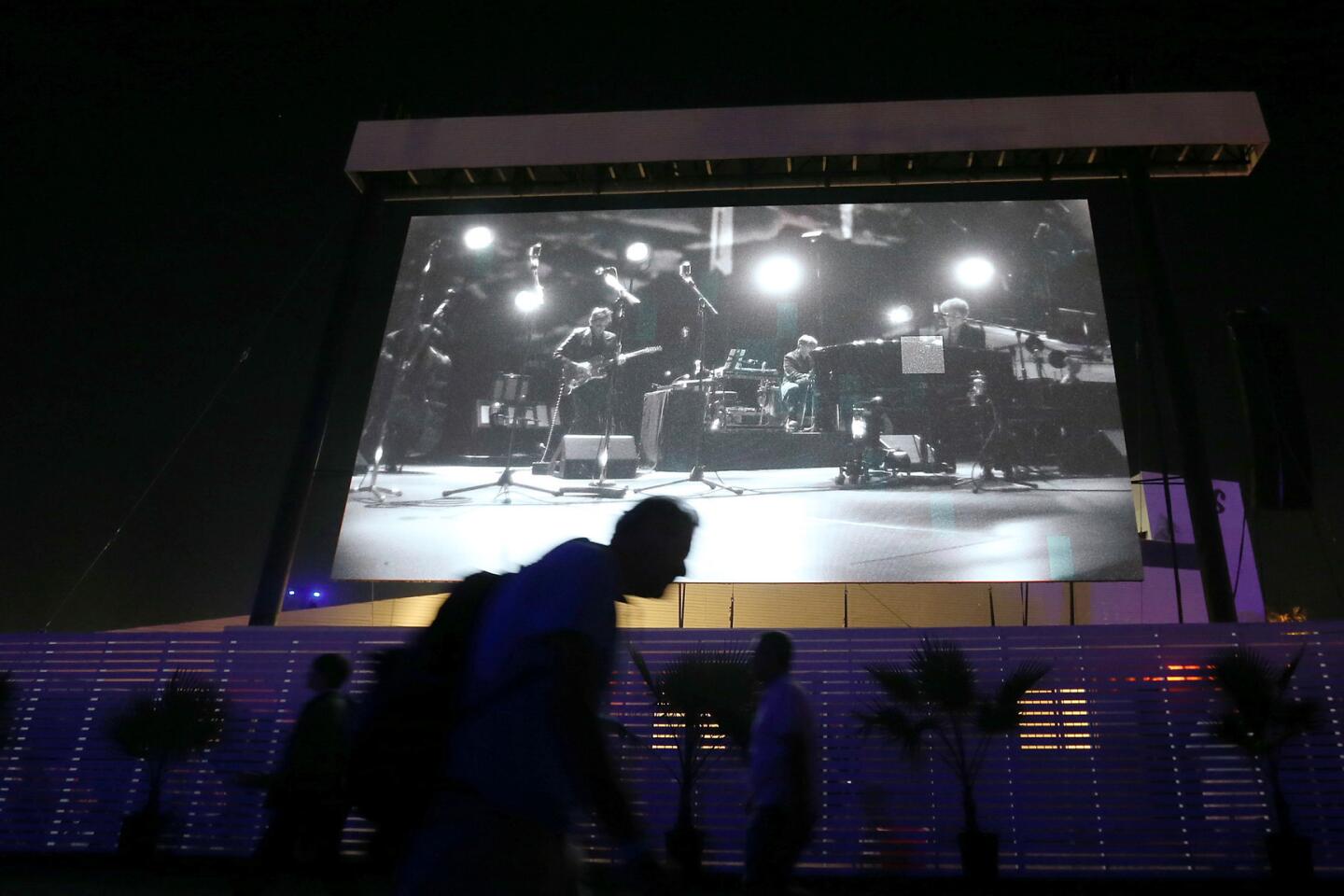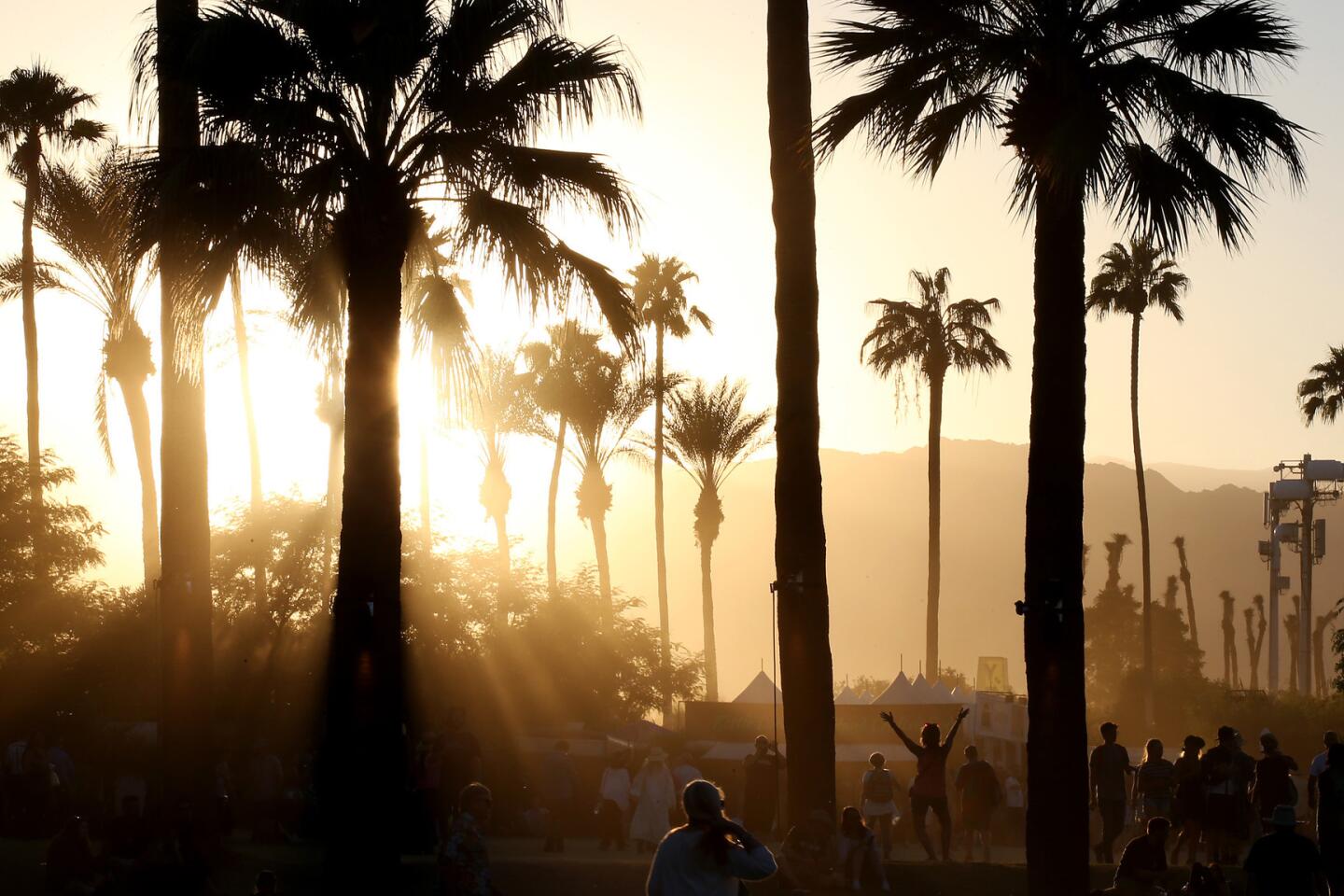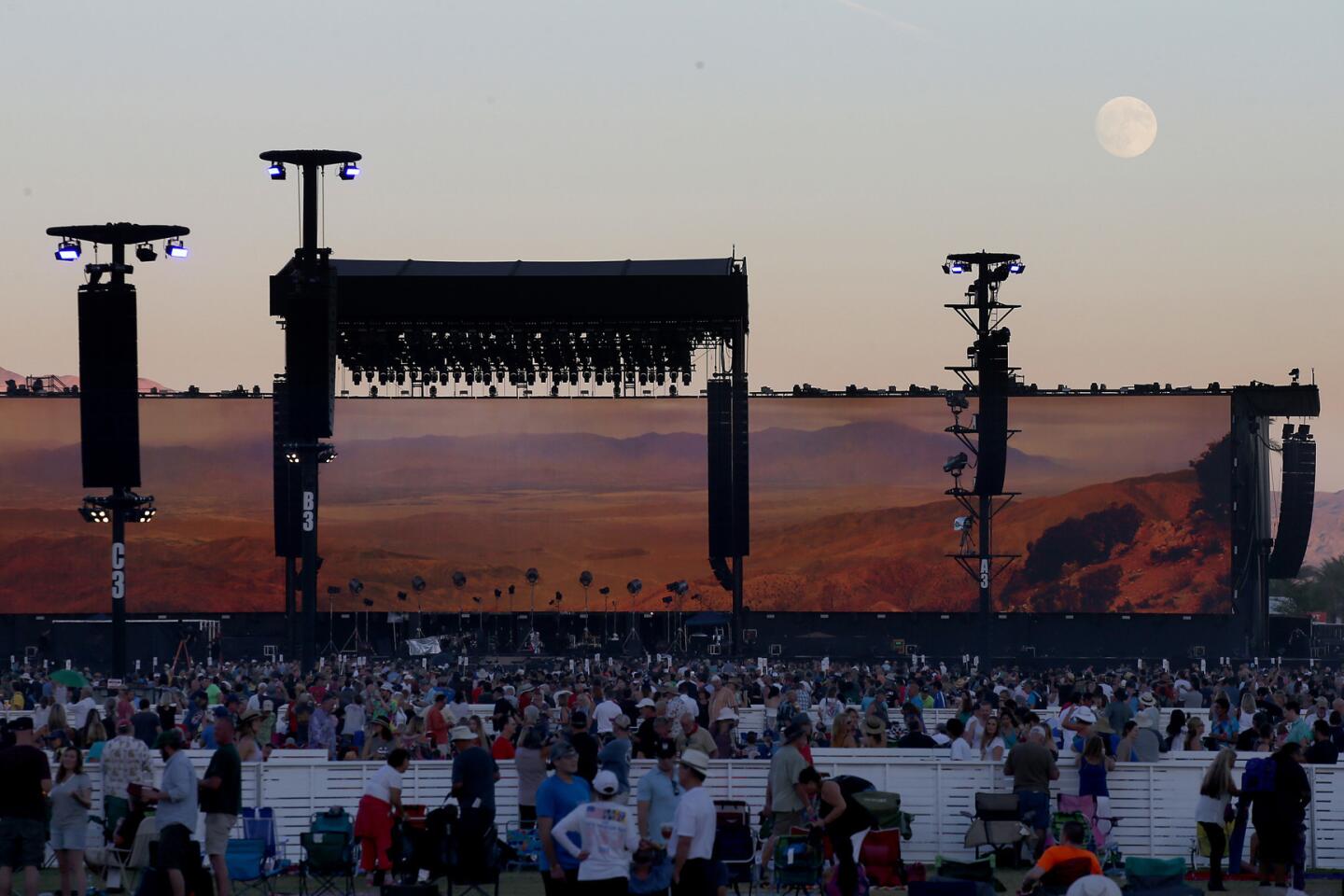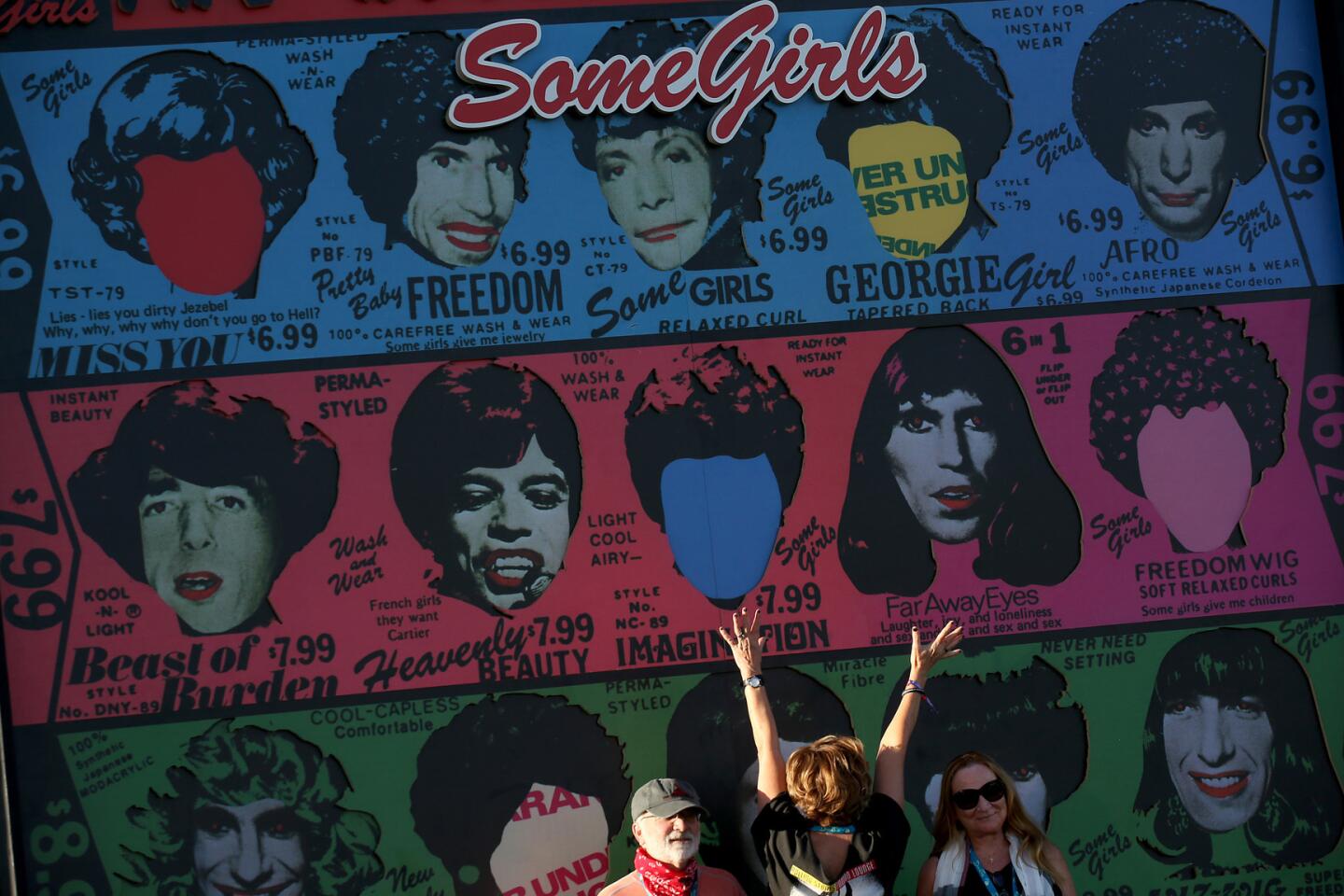Desert Trip: Giants of the Boomer generation speak to Gramps and the grandkids
- Share via
When Rihanna joined Paul McCartney in a surprise appearance to sing “FourFiveSeconds” at Desert Trip on Saturday night, half the audience cheered in immediate recognition. Others had to be told by their kids or grandkids seated next to them who the mystery lady was.
Earlier in the evening when Neil Young performed, younger crowd members held up cellphones to take videos. “I’m sending this to my aunt,” said Sarah Delaney, 26. “I only know some of his songs, and she really loves him, but I think he’s really good.”
Desert Trip is perhaps the first rock festival to successfully appeal to four generations of music fans: Boomers, Gen Xers, Millennials. and whatever we’re going to call the next generation who’s just entering middle school.
A new concept as music festivals go, it featured a never-before-seen lineup of classic rock titans on one stage. In addition to McCartney and Young, sets by the Rolling Stones, Bob Dylan, Roger Waters and the Who took place on the same grounds in the desert city of Indio as the Coachella Valley Music and Arts Festival and was curated by the same promoter, Goldenvoice.
Like Coachella, it spanned two consecutive weekends. Unlike Coachella, it featured only one stage, two bands per night, clean bathrooms and no dance tents. This was a rock ‘n’ roll fest to be sure, but one that indulged as much in nostalgia as the rouge-ish, outsider spirit its six artists all trafficked in.
Unofficially dubbed Oldchella when it was first unveiled in May, the roster seemed to cater to the Woodstock generation, a demographic not yet tapped for a show in the massive Southern California desert venue, and one largely ignored by other festival planners across the U.S.
The Desert Trip website even played into that notion: Promotional videos for the event looked more like Cialis commercials. A silver-haired man riding shotgun in a convertible, playfully banging out a drumbeat on the dashboard with his hands. A mature woman trying on a sassy sun hat in front of a mirror before spinning around like Stevie Nicks. A jovial couple raising their wine glasses in a toast to something that must be great (could it be Desert Trip?) given their gleaming smiles.
But the reality on the ground over the weekend was far more intriguing than the demographic-pandering videos predicted.
On the Empire Polo Club field where the festival took place, elderly couples in visors and with fanny packs shared the same bleacher benches with Millennials dressed like Boomers in their youth -- fringe, tie dye and flowered-hair garlands. Couples with babies and toddlers pushed strollers across the grounds.
An audience member in his early teens played a video game on his phone as he and his father, a middle-aged man in a Stones T-shirt, waited for McCartney to appear.
Gen Xers, who first discovered the desert venue when Coachella was coming into its own in the early 2000s as an indie and dance-focused festival, now sang along to McCartney’s Wings-era songs. A younger crowd, many of whom came with their parents, bopped to “Hard Day’s Night.”
The diversity of the audience – at least in age, not in race – spoke to the wide appeal of the artists on Desert Trip’s roster, all of whom have superseded the era they’ve come from to mean different things to different generations.
There were those who gravitated toward entertainers such as the Stones and McCartney. Rebels had to wait until Sunday for the Who and Roger Waters.
For the more socially conscious, there was Dylan and Young, because if there was ever a time in the past half century that’s come close to mirroring the social upheaval of the 1960s, it’s now — protests over institutional racism brought on by police shootings, feminist issues revived on a national scale by sexual assault allegations against Donald Trump, America’s involvement in decade-plus conflict’s overseas.
Countercultural artists such as Young and Dylan addressed similar issues five decades ago. And contrary to one of the many myths spun about the 1960s, their art wasn’t simply about generational divide and Vietnam; it captured the fears, hopes and confusion of a culture on the precipice of change. What could be more fitting today?
But on Friday, Dylan, who’d just won the Nobel Peace Prize for literature a day earlier, stayed safely rooted in nostalgia, delivering a well-executed yet low-intensity set. As is his norm, he remained silent between songs such as “Tangled up in Blue” and “Highway 61 Revisited,” and offered essentially the same collection of tunes as the week before, save most notably for a cover of “Why Try to Change Me Now?”
In contrast, Young, who performed Saturday before McCartney, played a set of old and new original material, acoustic and electric, mellow and impassioned. With equal amounts of affection and intensity, he delivered favorites such as “Old Man,” “Heart of Gold,” and “Rockin’ in the Free World,” as well as newer numbers about the rising national fear of immigrants (“Neighborhood”) and hypocrisy in the U.S. political and social system (“Show Me”).
Though the material was fresh to most, his ferocity energized the audience, who cheered after he sang, “When the women are free to stand up for themselves, show me!”
At one point after “going off message” to talk about specific agricultural laws in California and how he believed they were harming the environment, he jokingly apologized for letting the “outside world” into the venue.
And it was easy to forget that world outside at a festival as comfortable and curated as Desert Trip.
Unlike Coachella, the bulk of the grounds here offered assigned seating, complete with towering, glistening-white grandstands, which were newly constructed for the concert and fit the polo ground-aesthetic of the site. There was even an air-conditioned tent with a gallery-like exhibit of classic rock portraits and a glossy center bar for mixed drinks.
Those who made the trek to the desert paid upwards of $700 for a 3-day pass with seating, while admission for the open grass area in the back of the venue ran $300 for the weekend. Gourmet food packages were available, including the “Culinary Experience” at $179 per person per day. A craft beer garden offered California breweries at $13 a cup, while merchandise booths sold $70 Macca hoodies and $25 Desert Trip canvas shopping totes.
Even though Desert Trip was initially announced as a once-in-a-lifetime opportunity by its promoter, the show’s success -- it’s estimated to have pulled in $160 million, the most of any music festival ever -- and the extensive new setup would suggest otherwise.
The challenge would be procuring another lineup as far-reaching as this one.
ALSO
At Desert Trip, Bob Dylan and the Rolling Stones make the world go away — instead of fighting for it
Why Bob Dylan’s Nobel Prize is the best thing that can happen to the book world
More to Read
The biggest entertainment stories
Get our big stories about Hollywood, film, television, music, arts, culture and more right in your inbox as soon as they publish.
You may occasionally receive promotional content from the Los Angeles Times.
